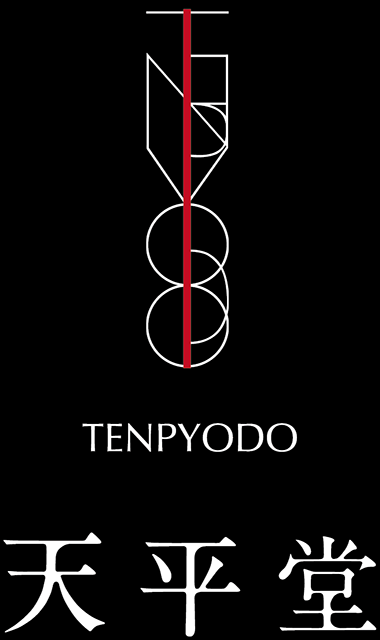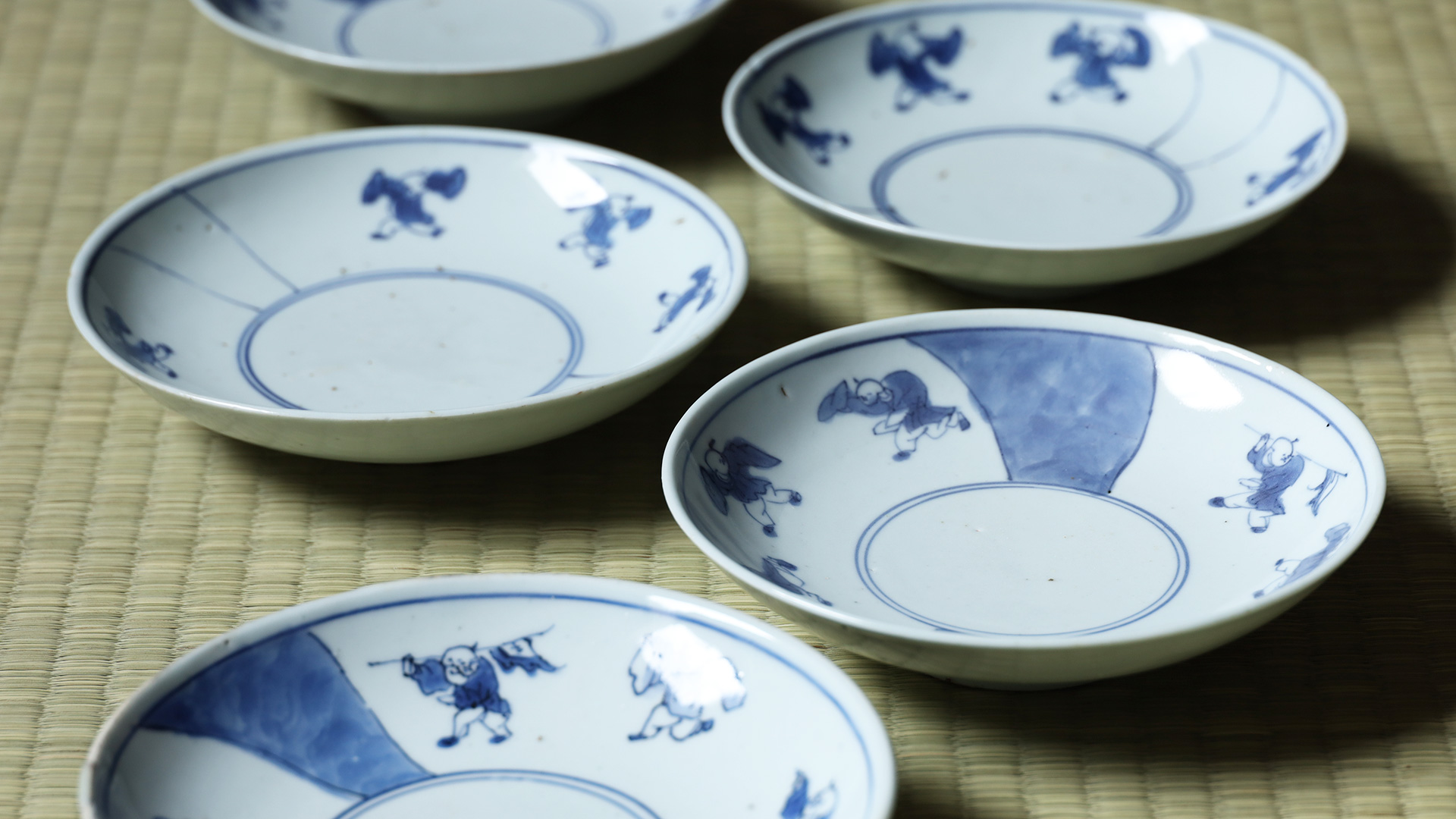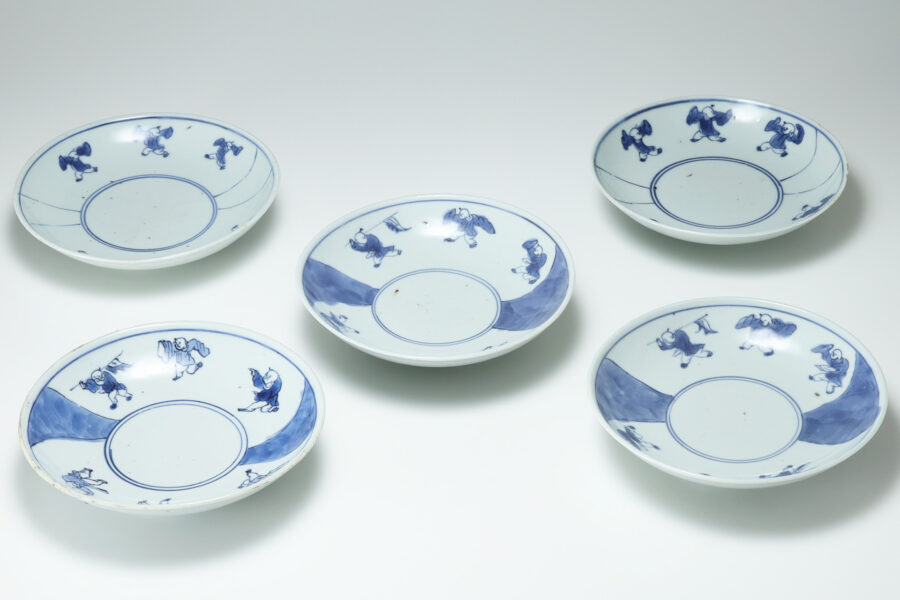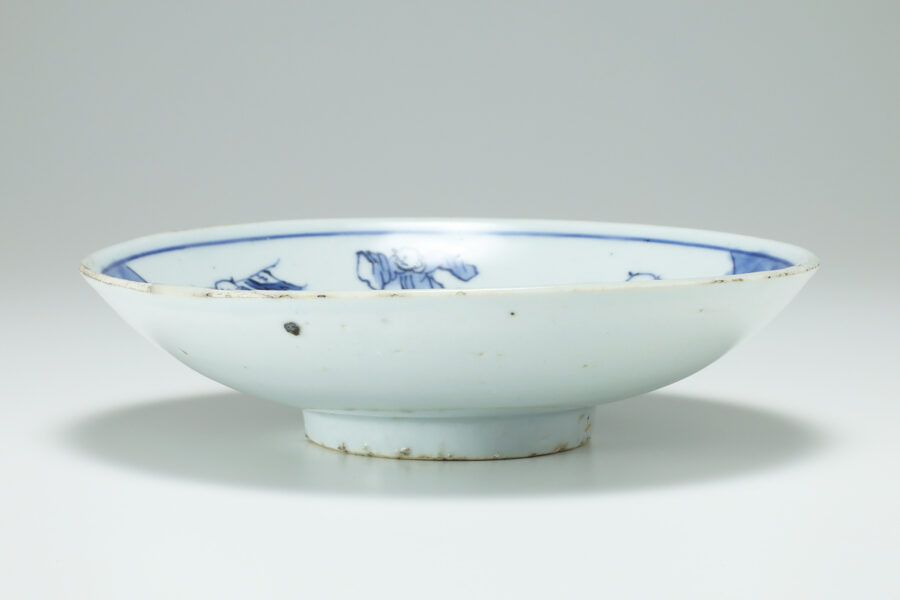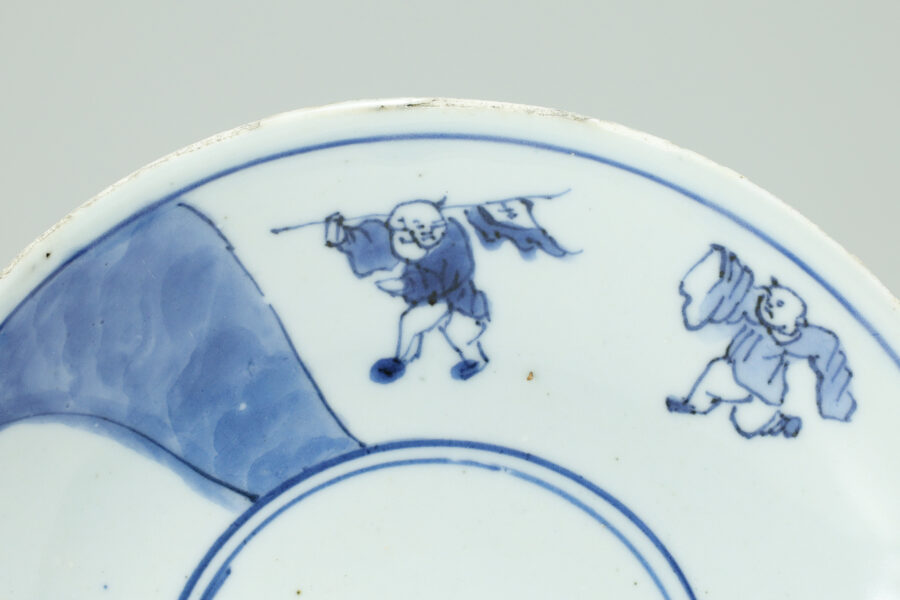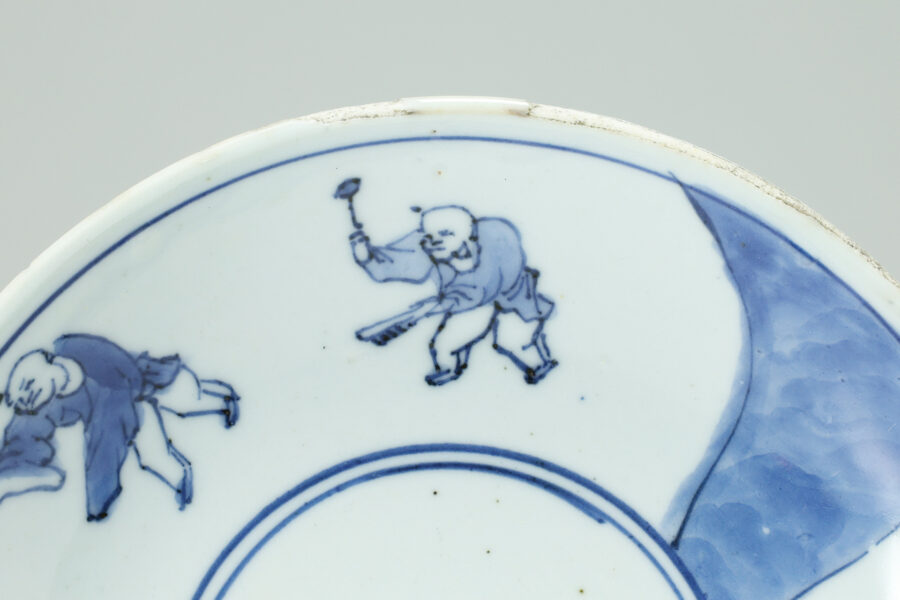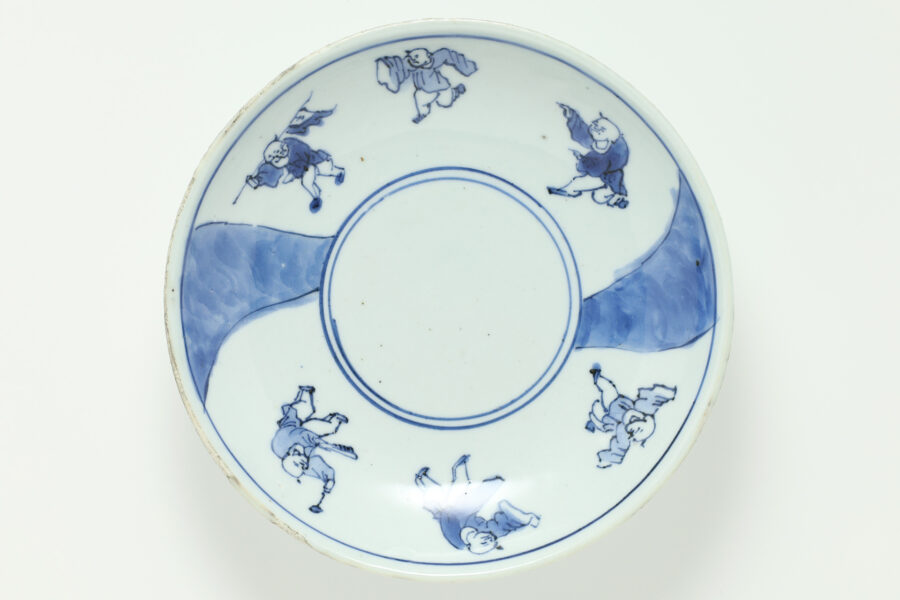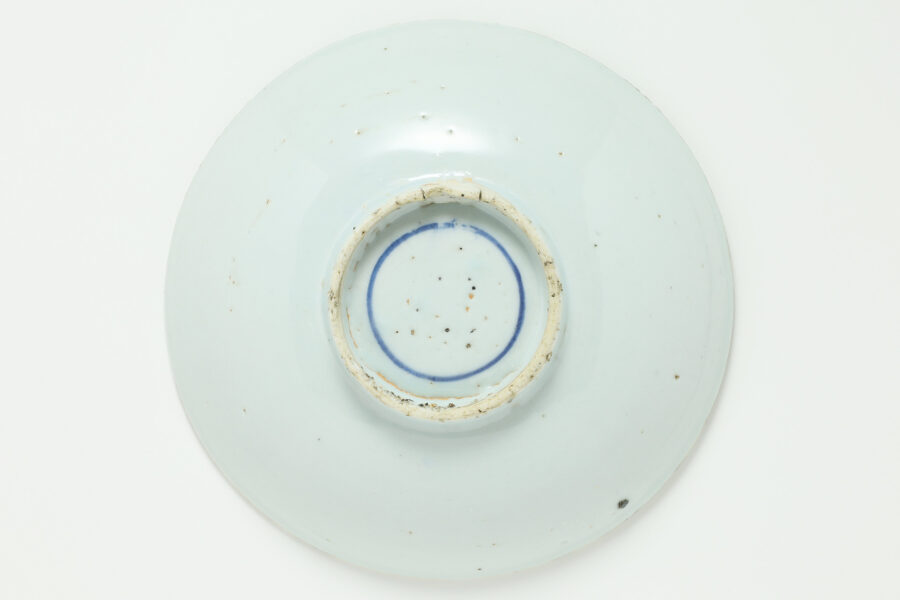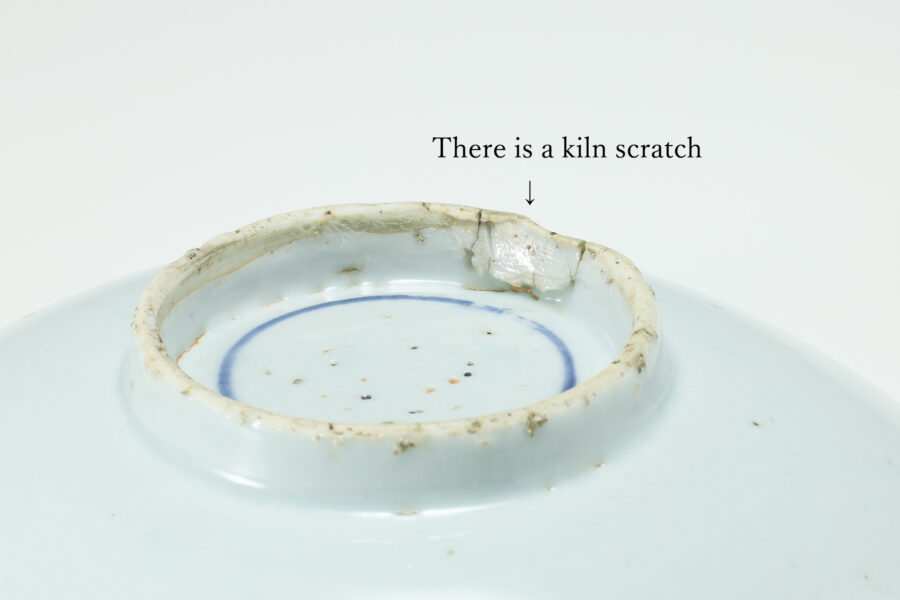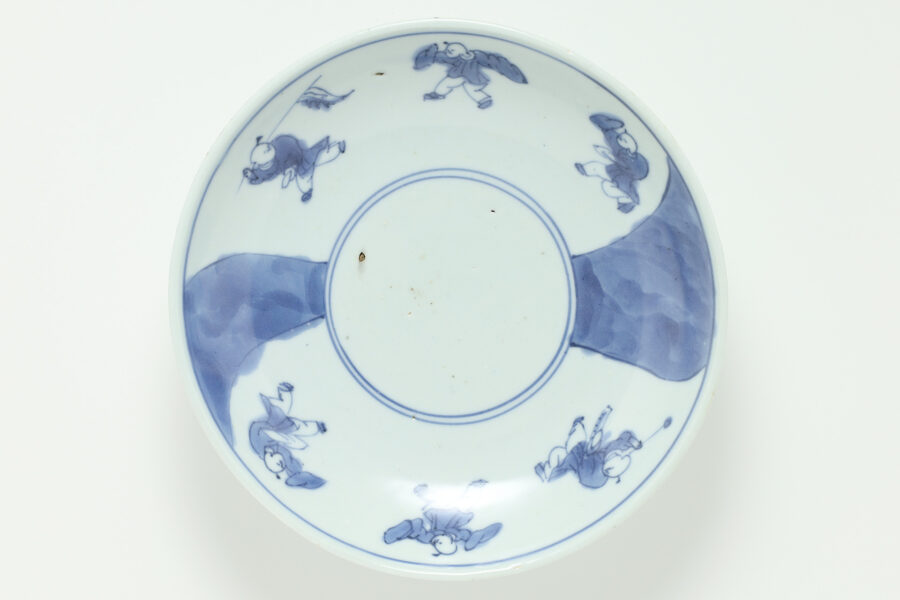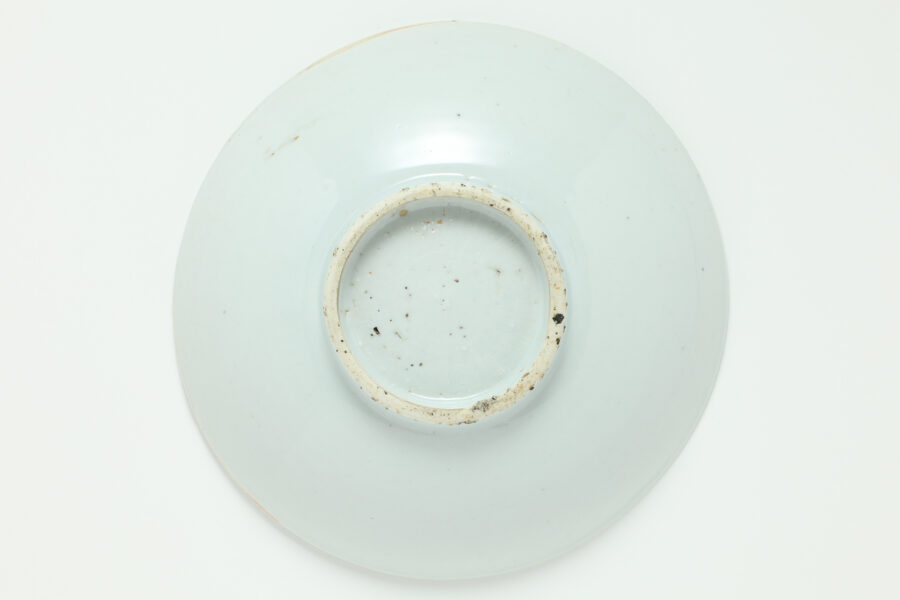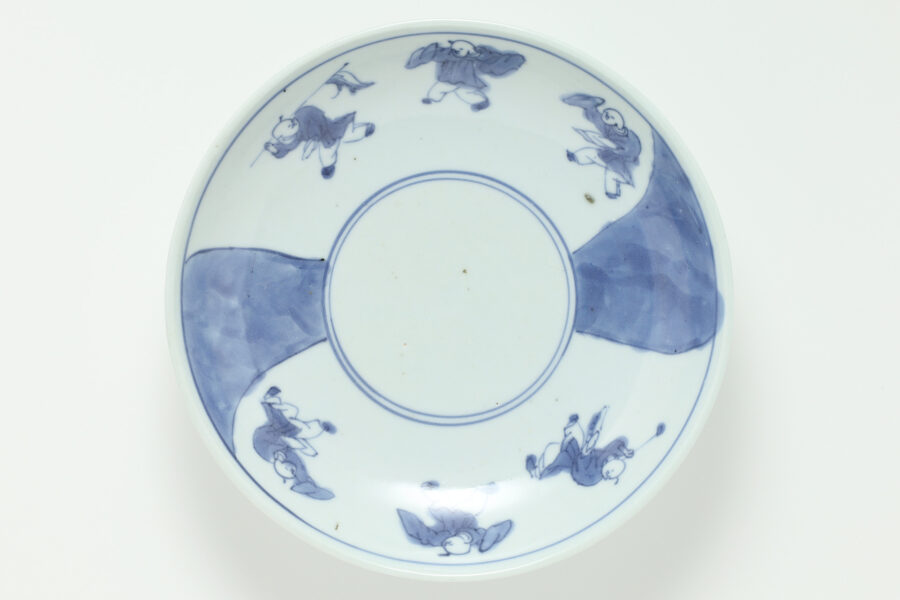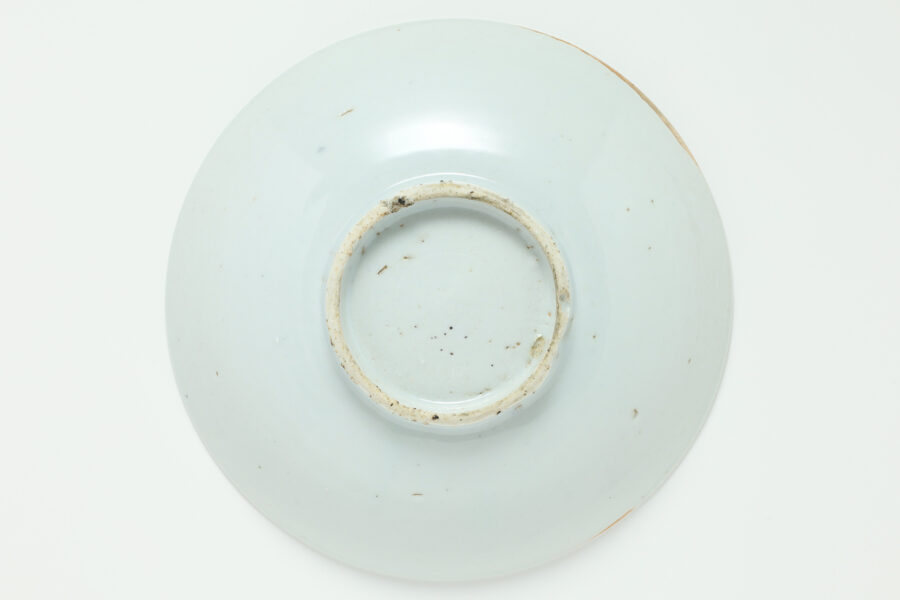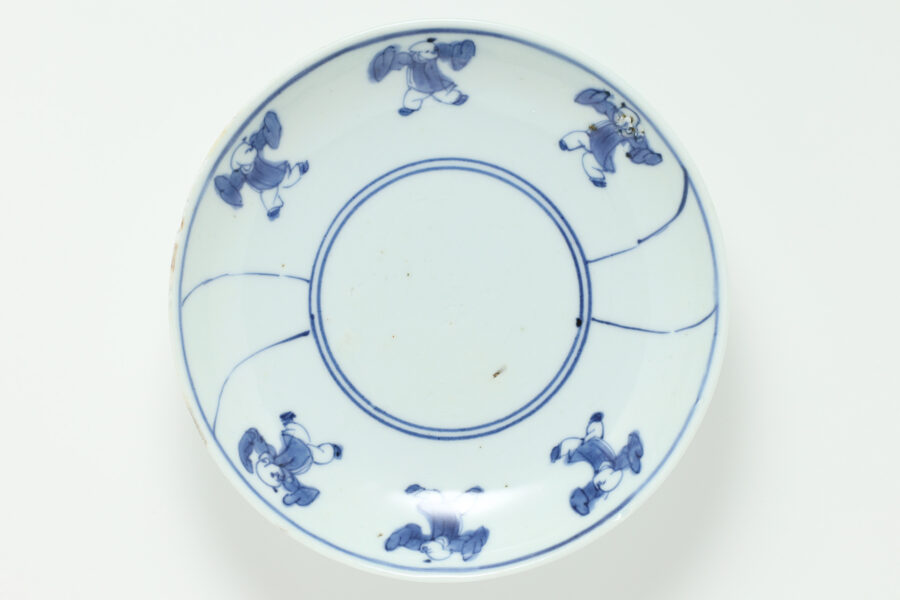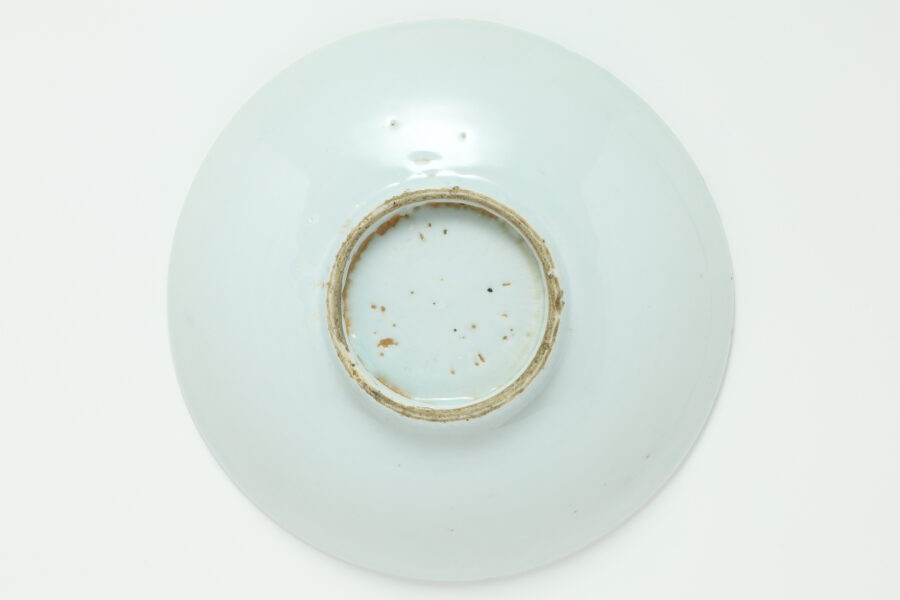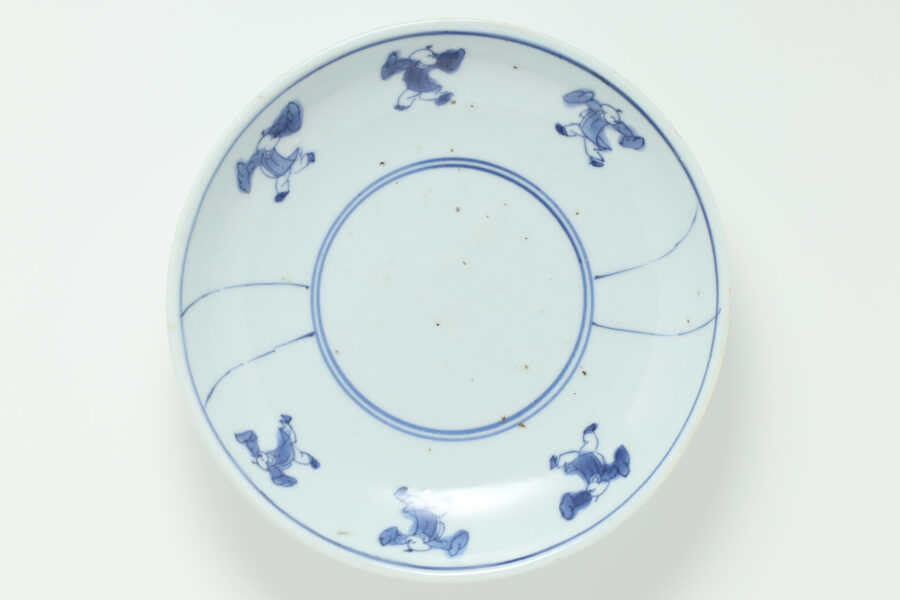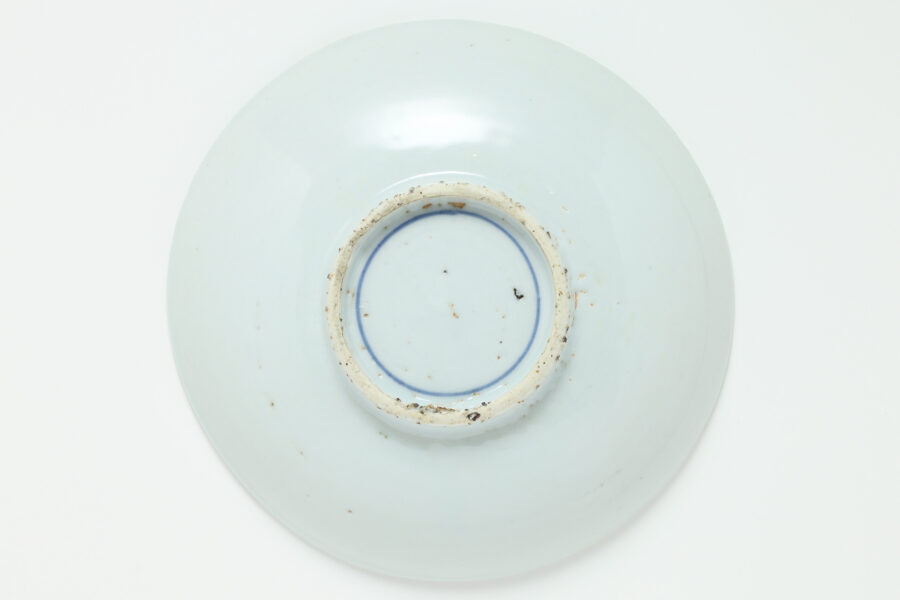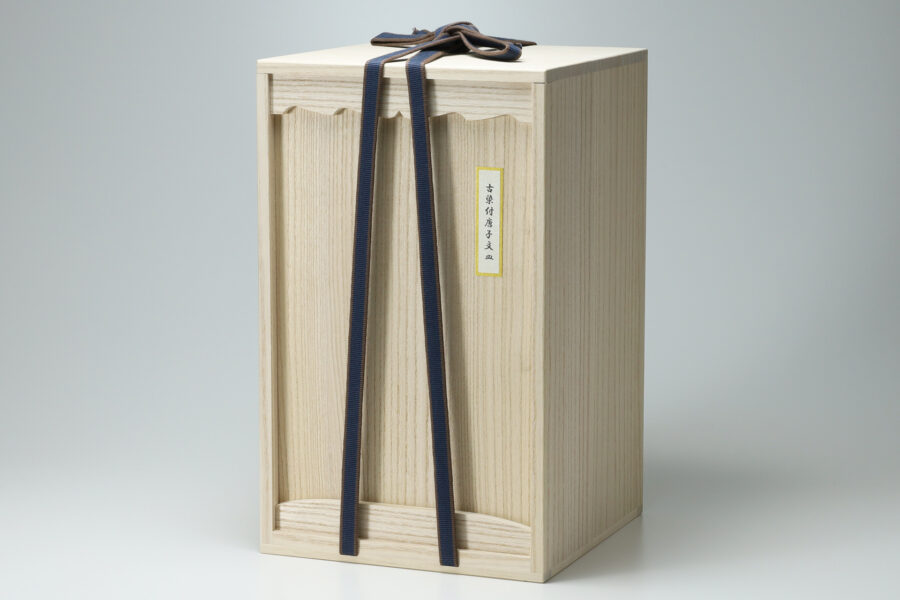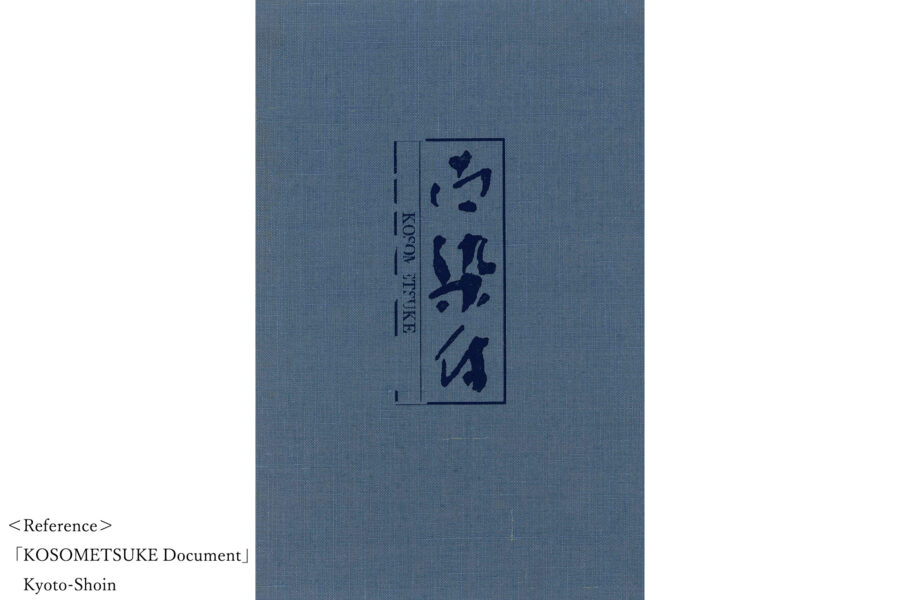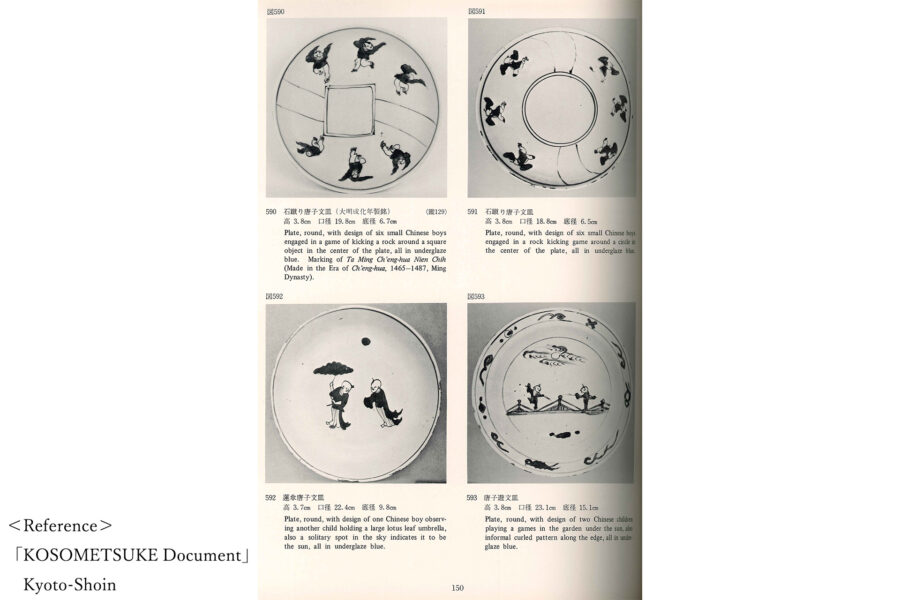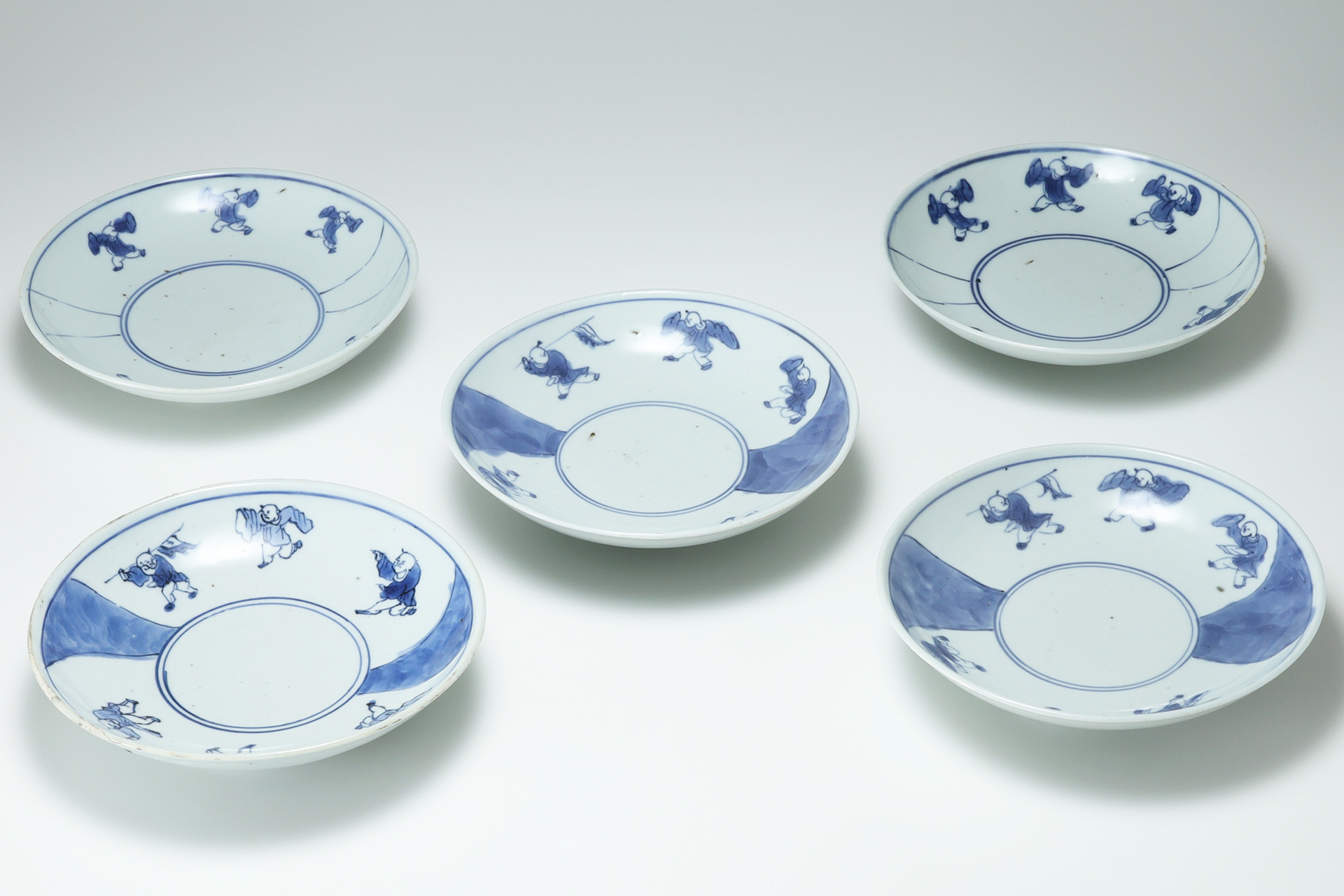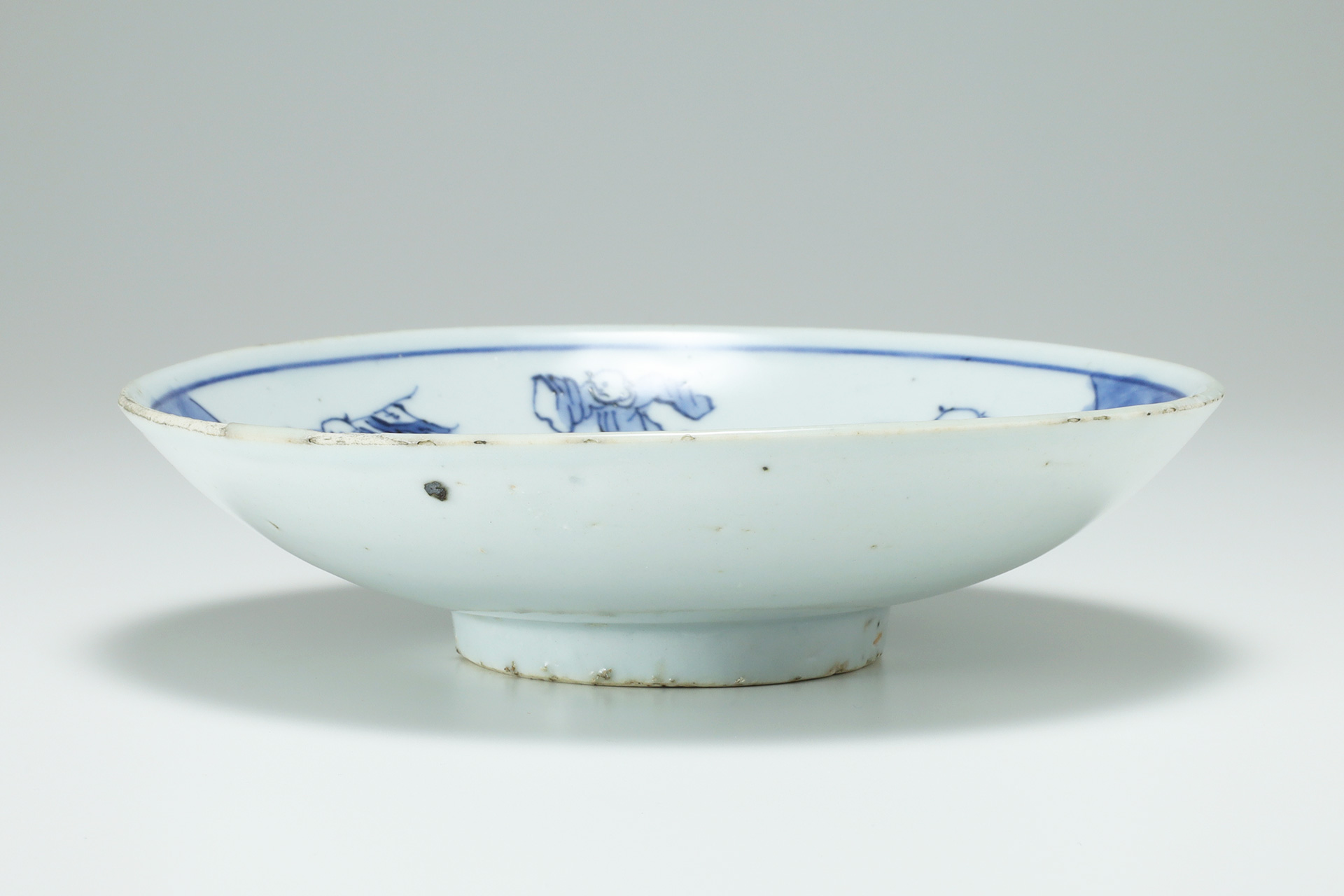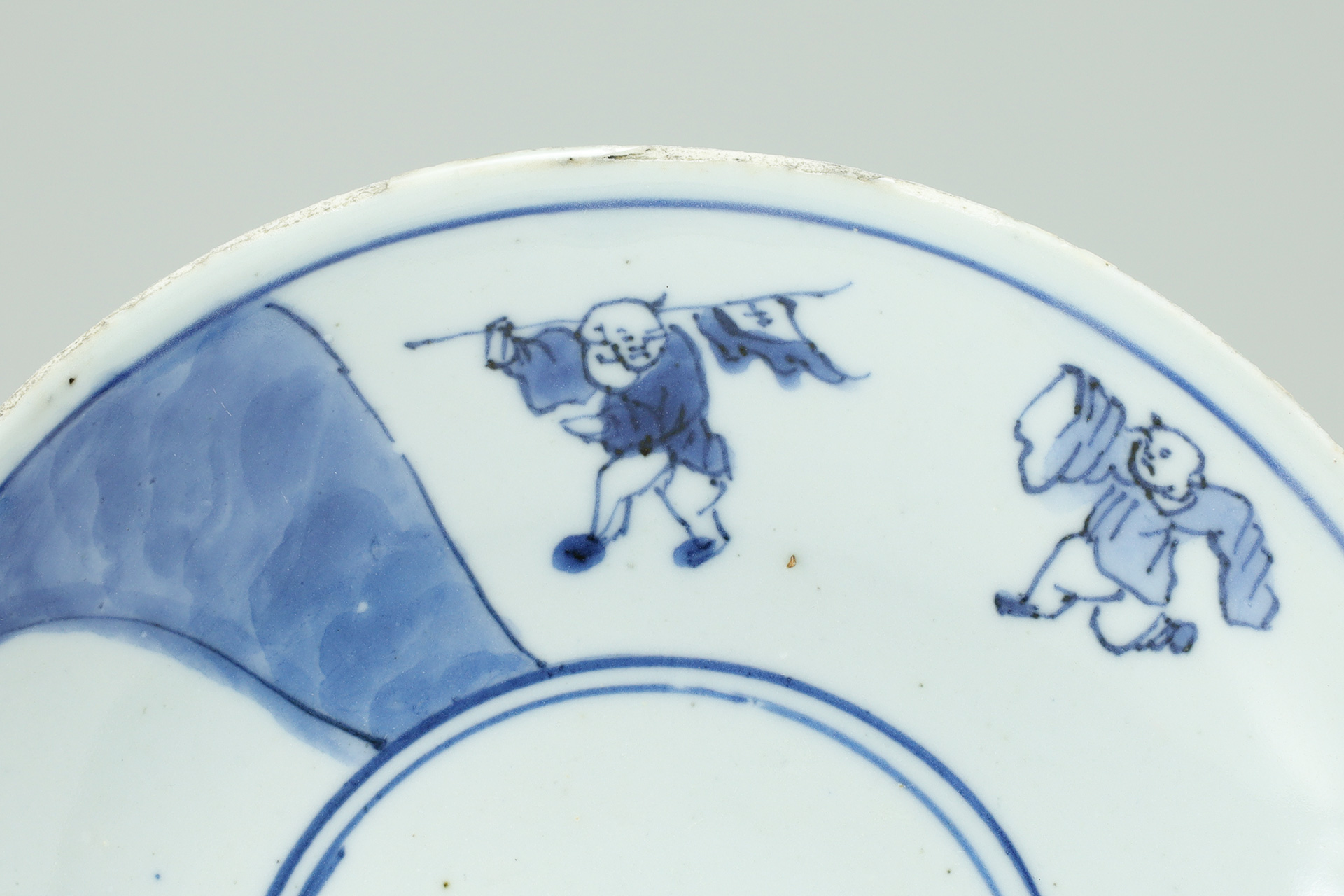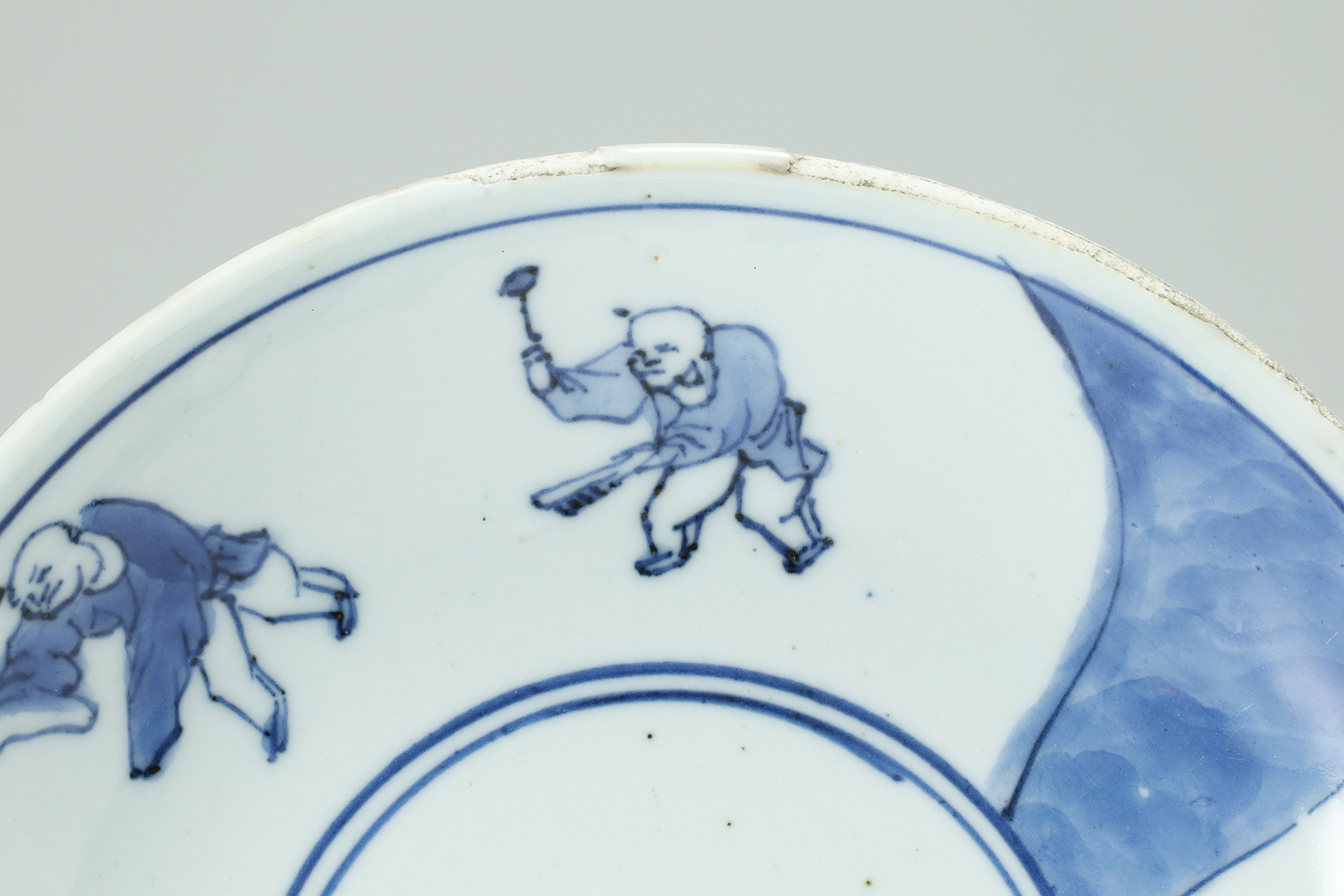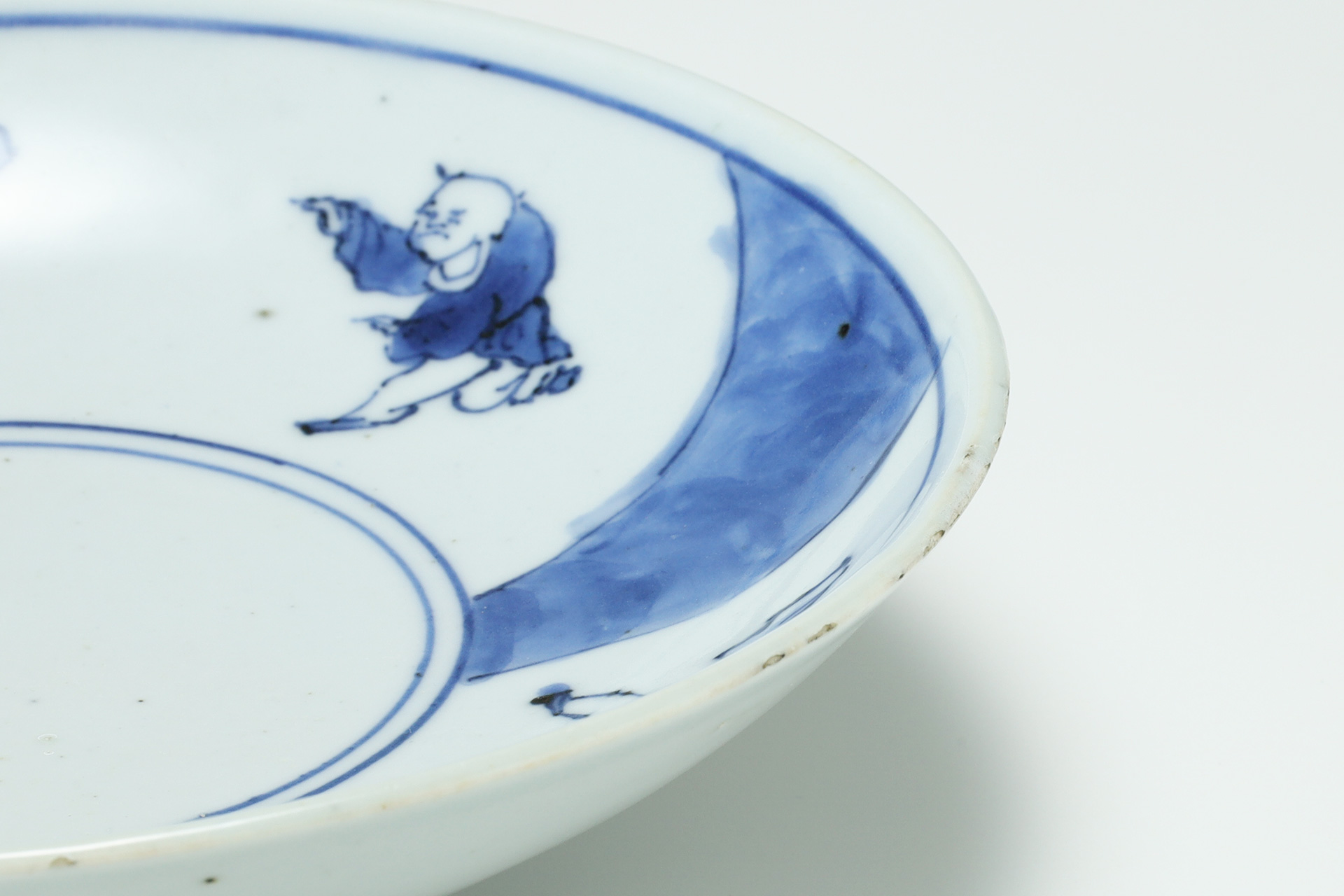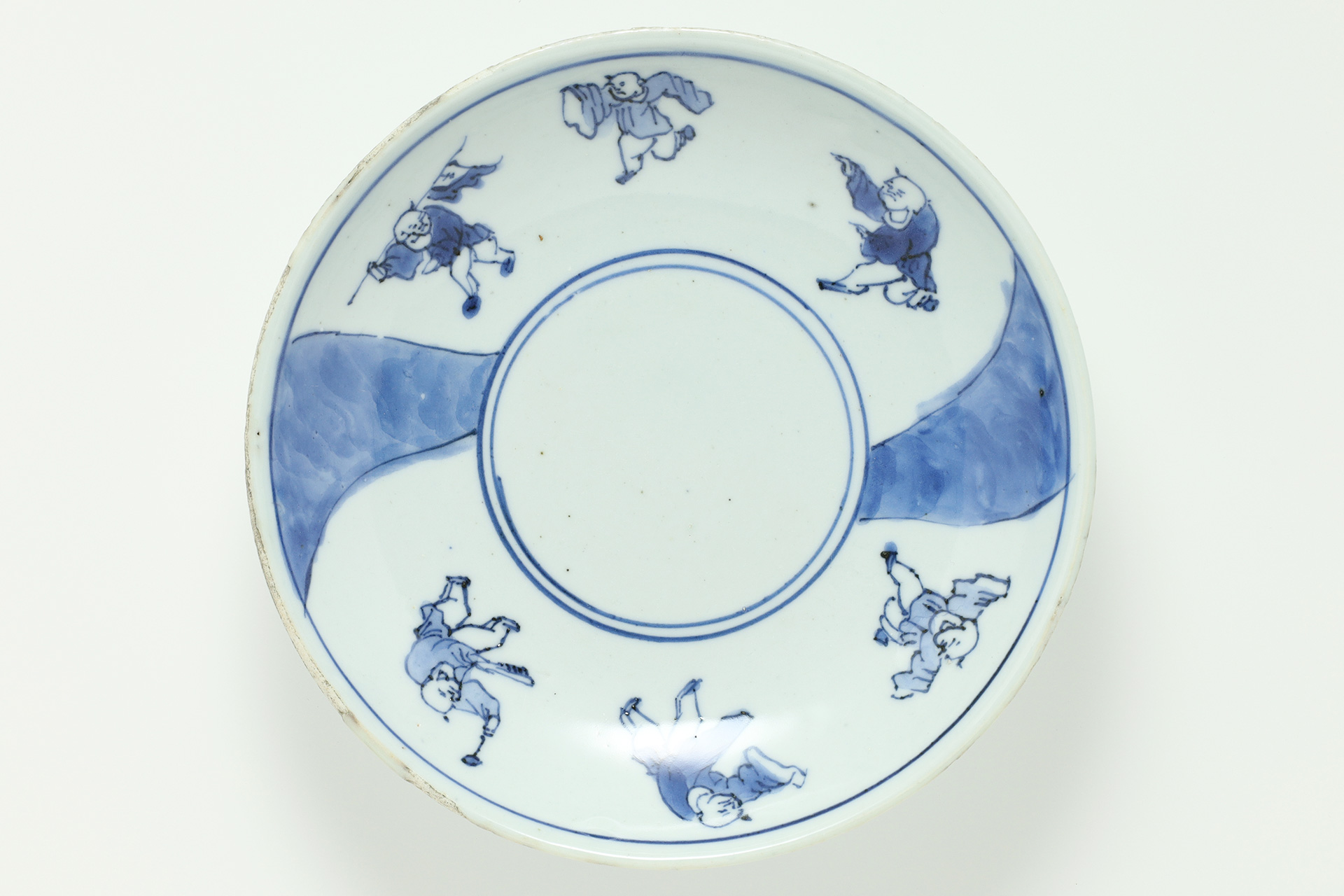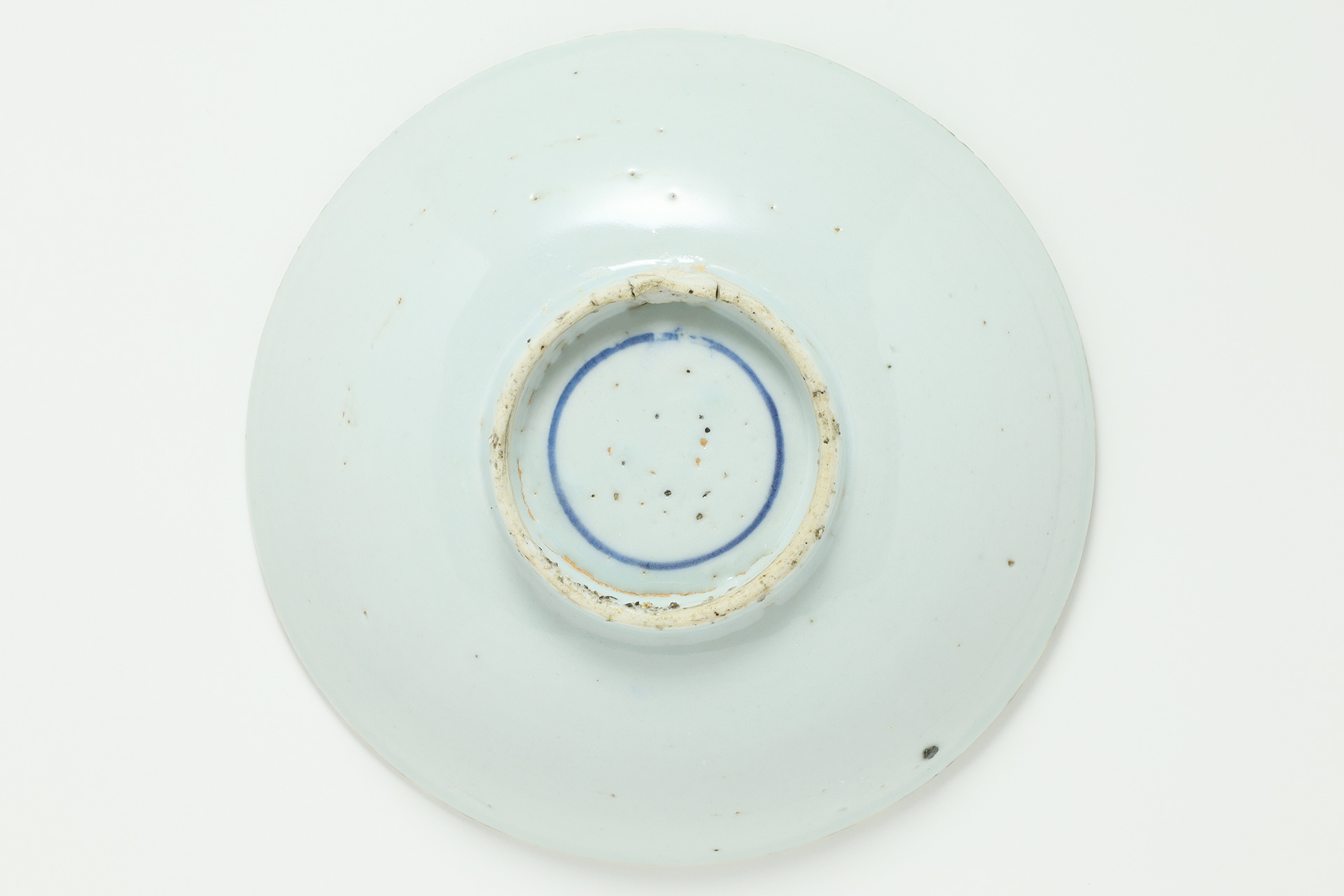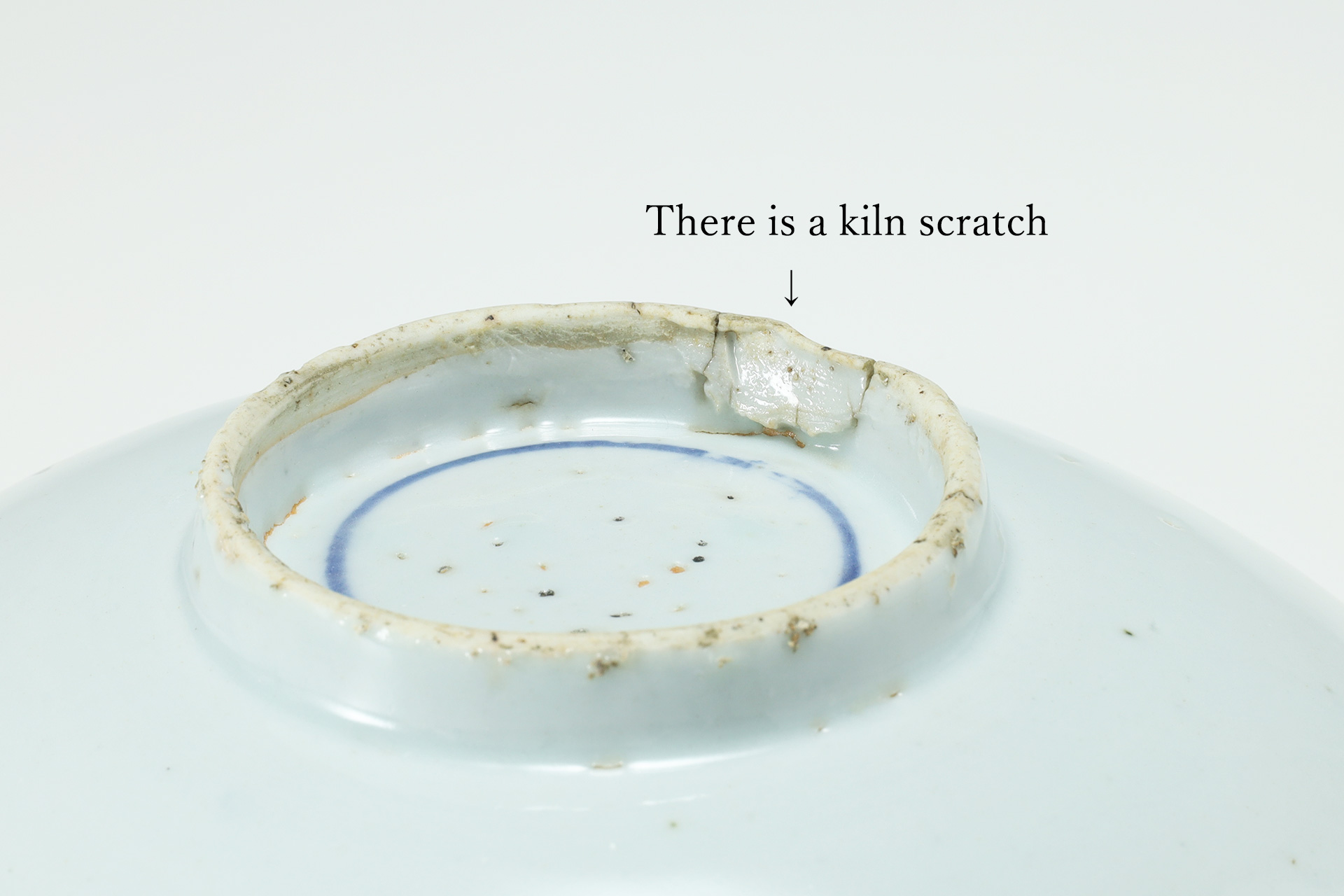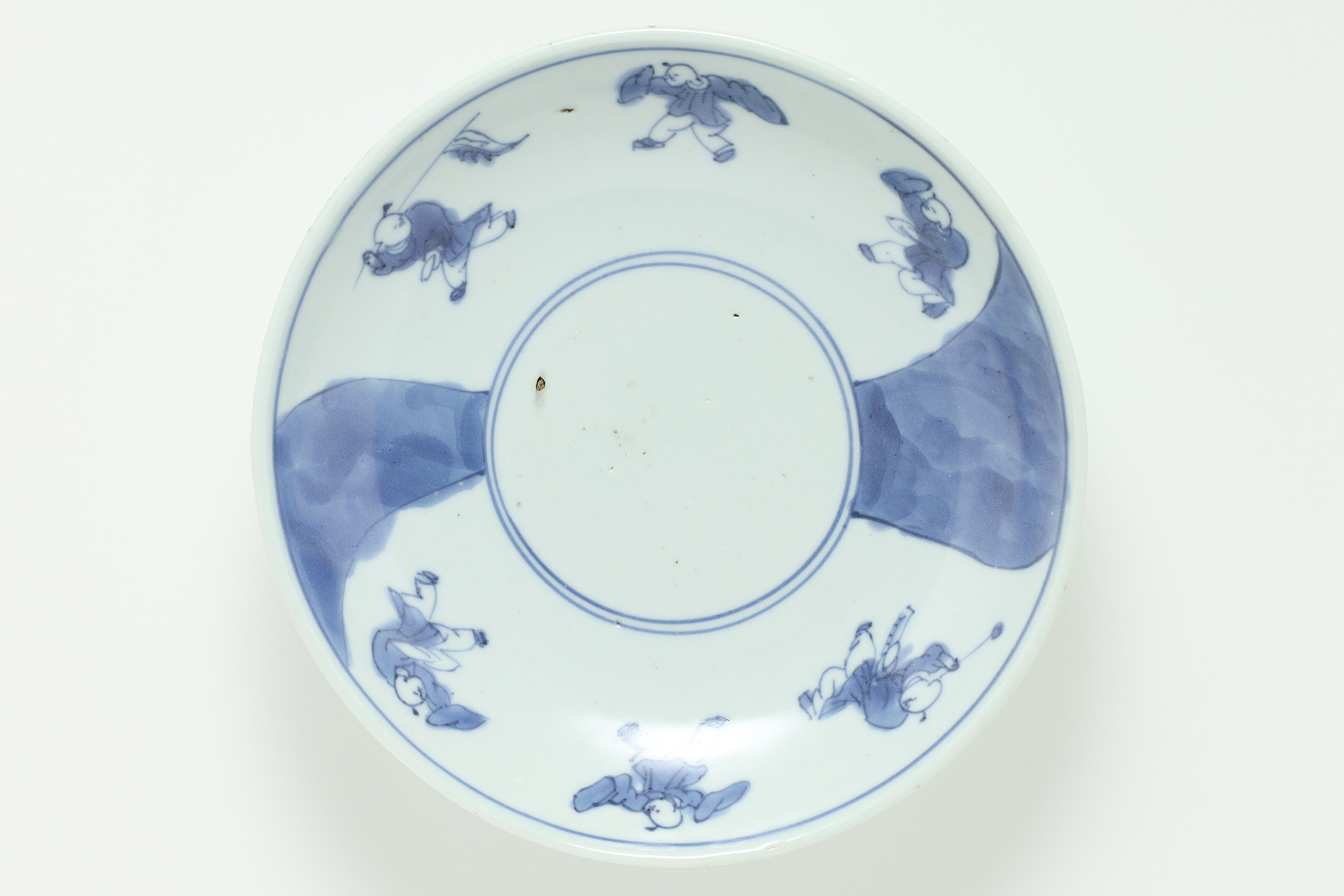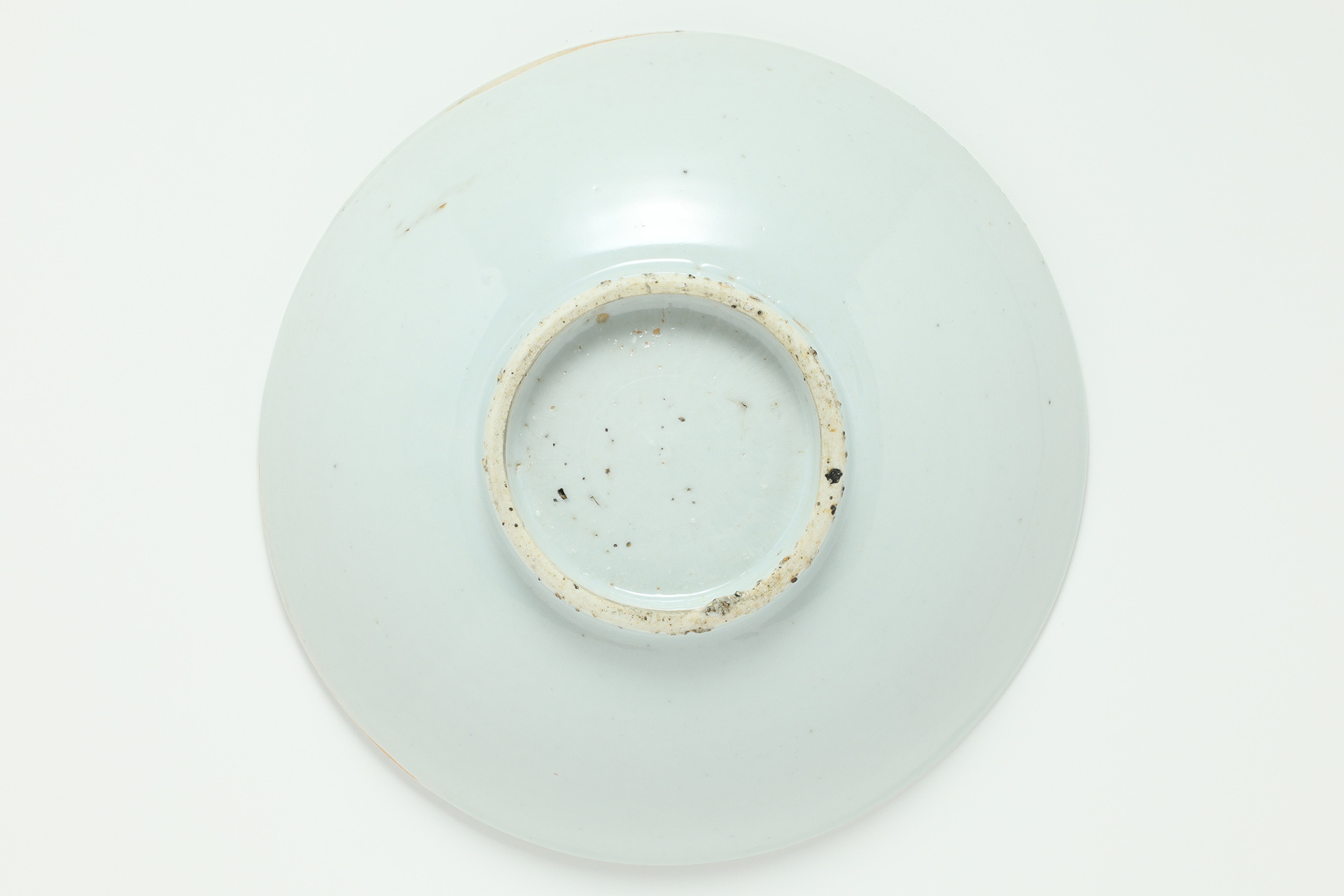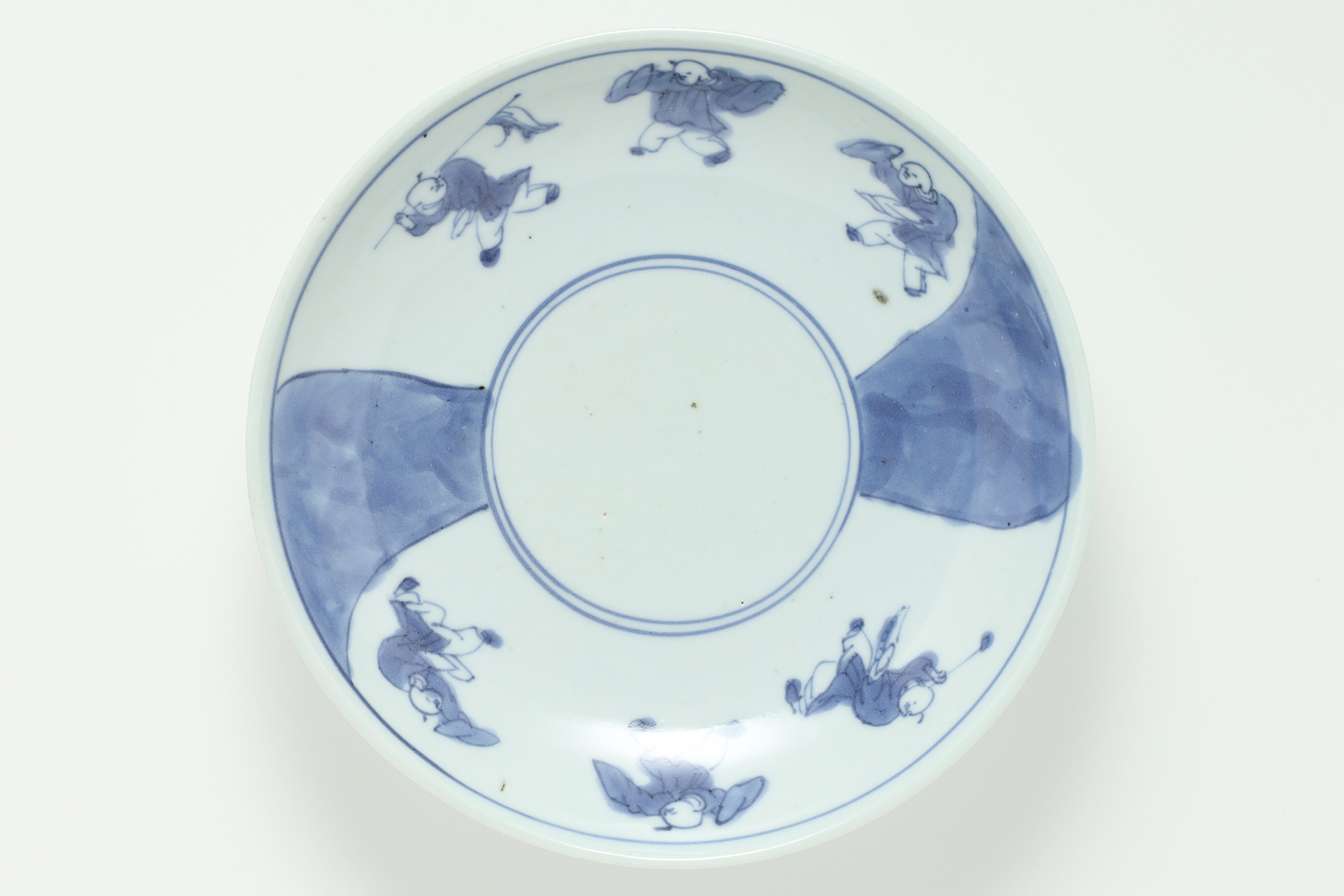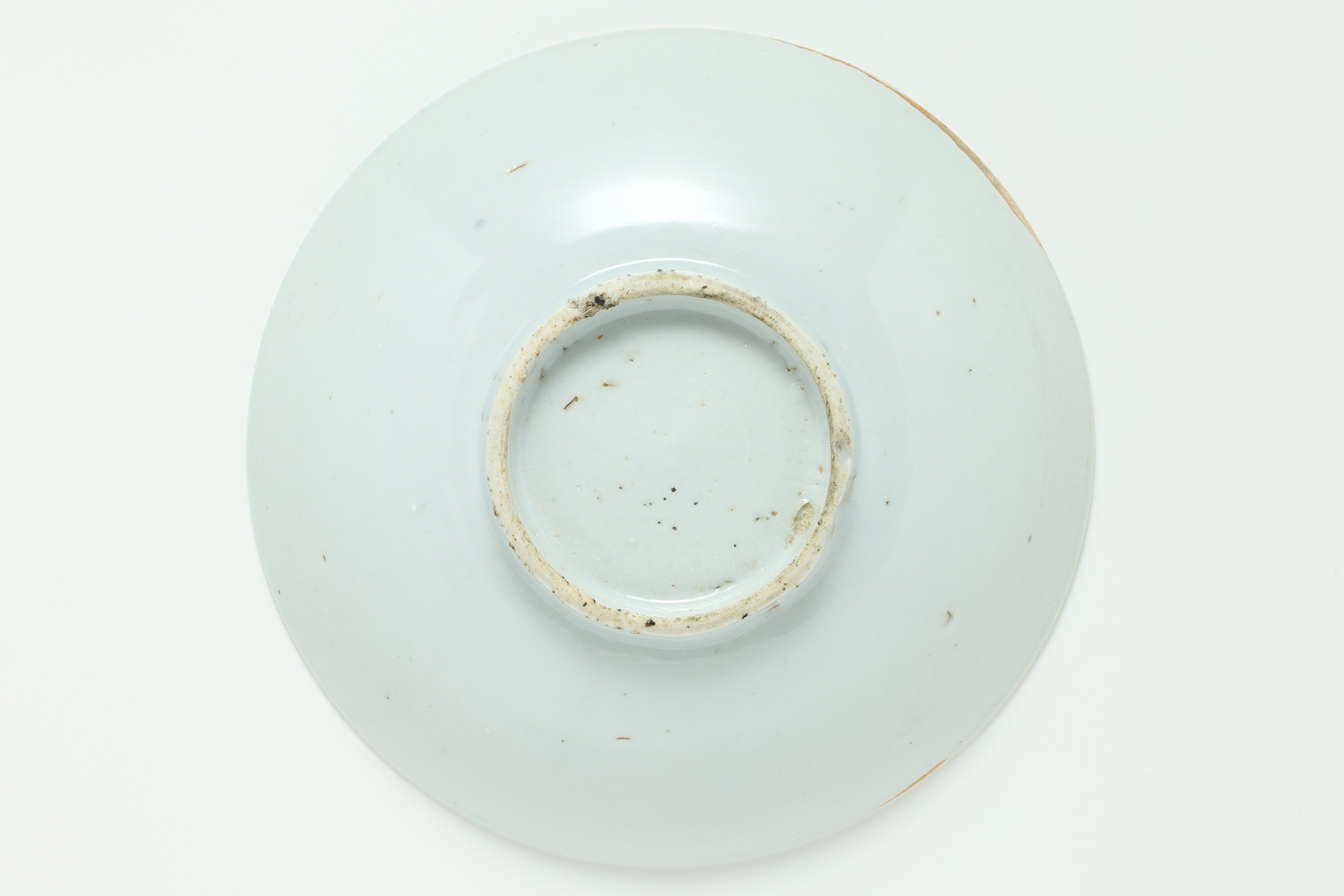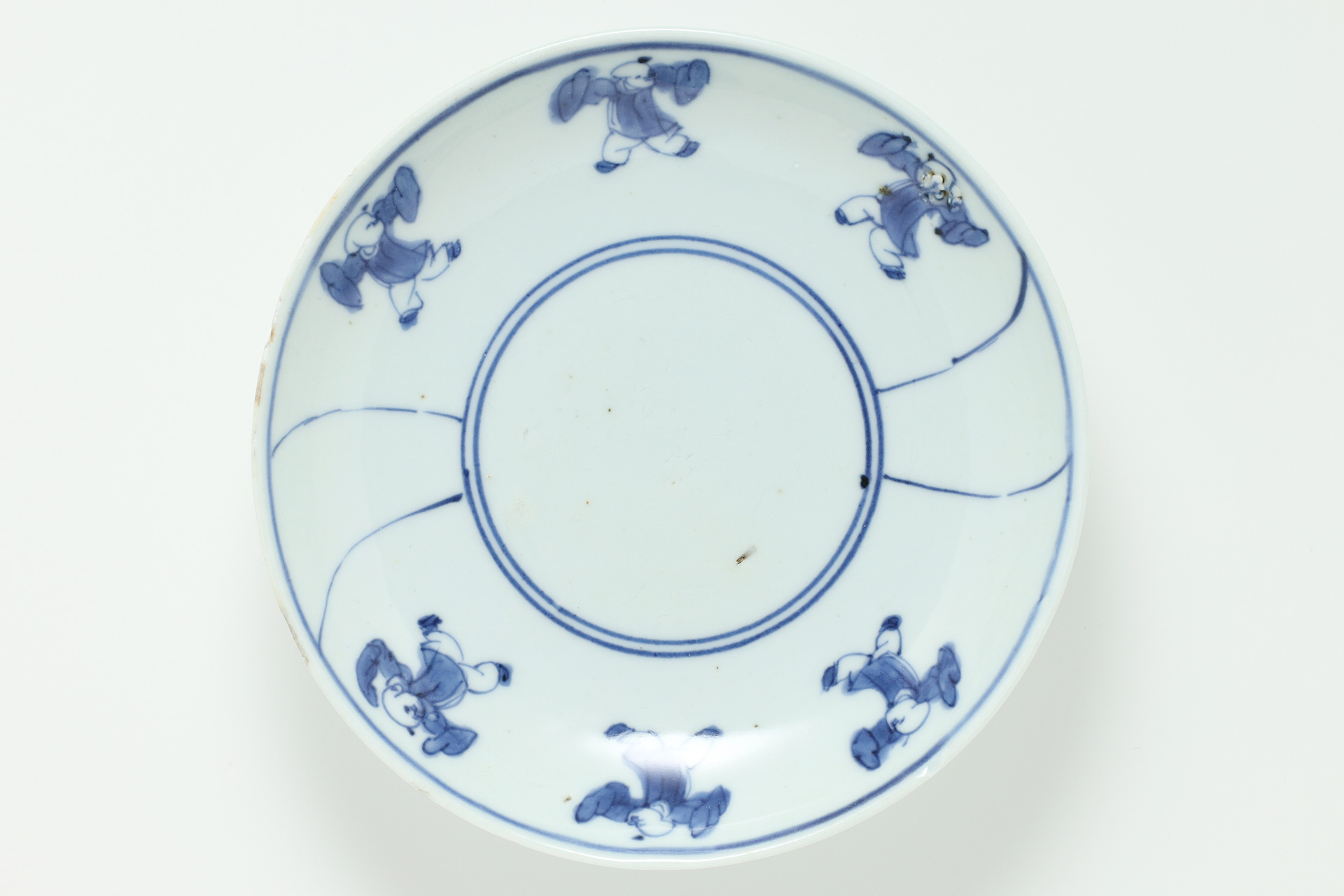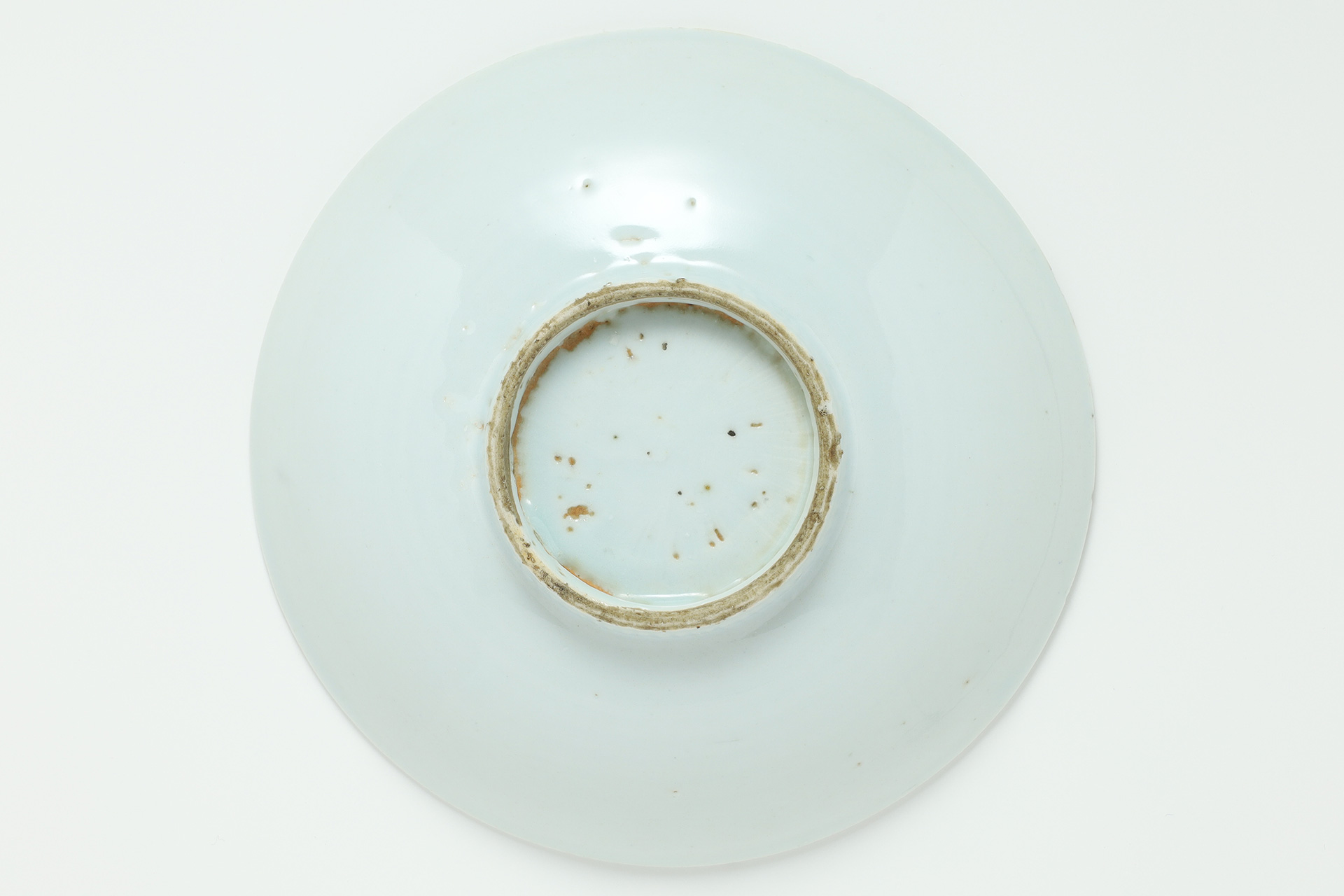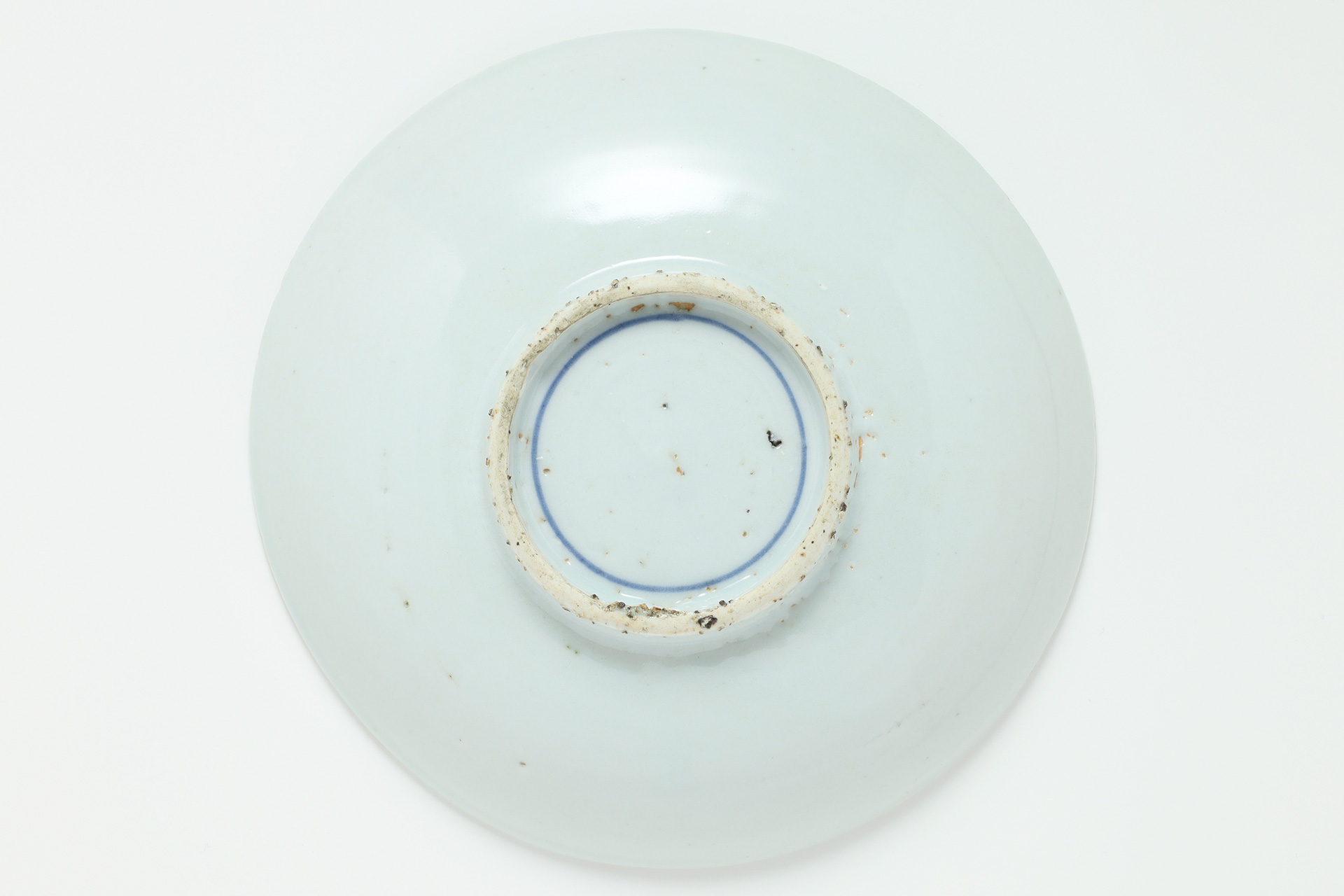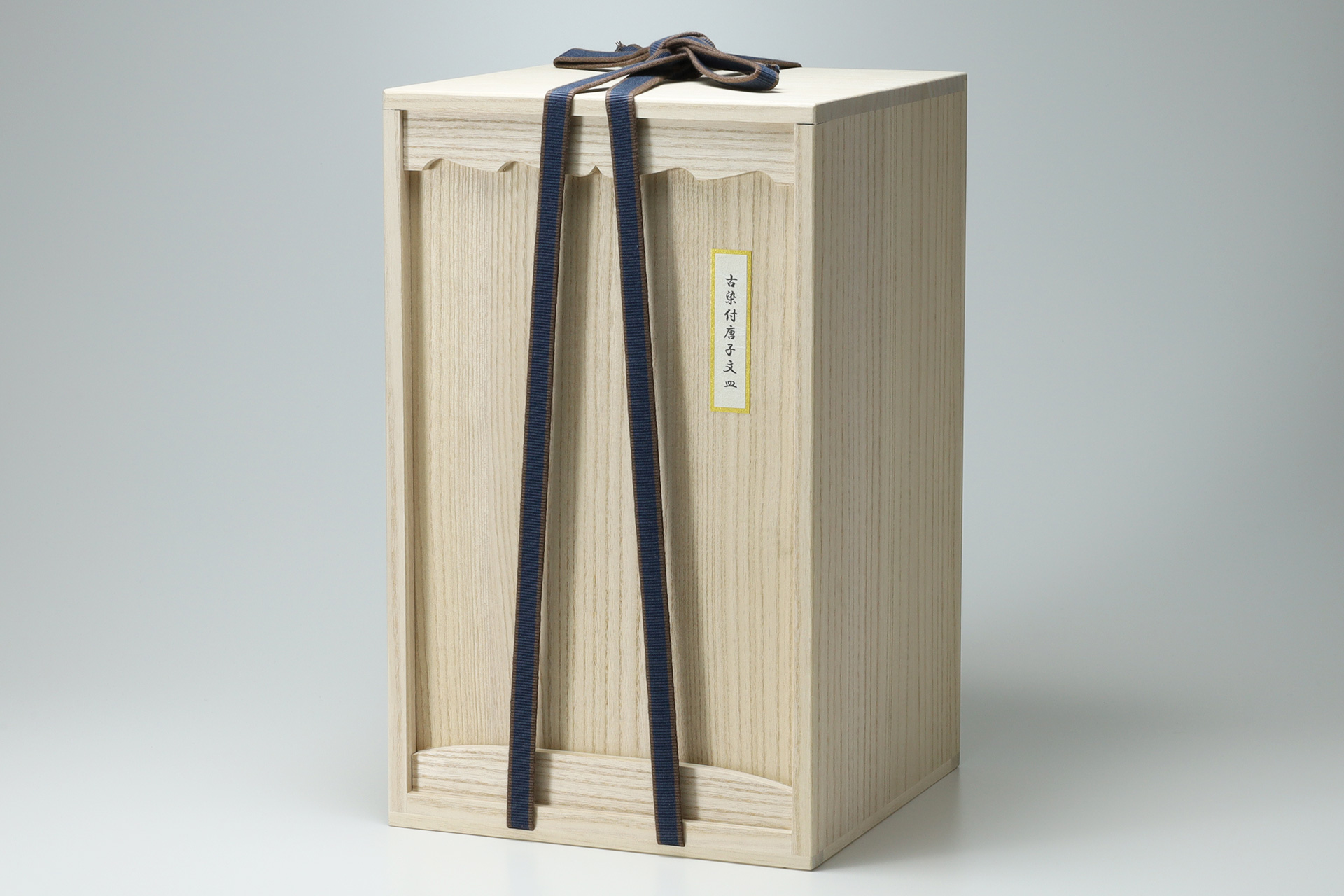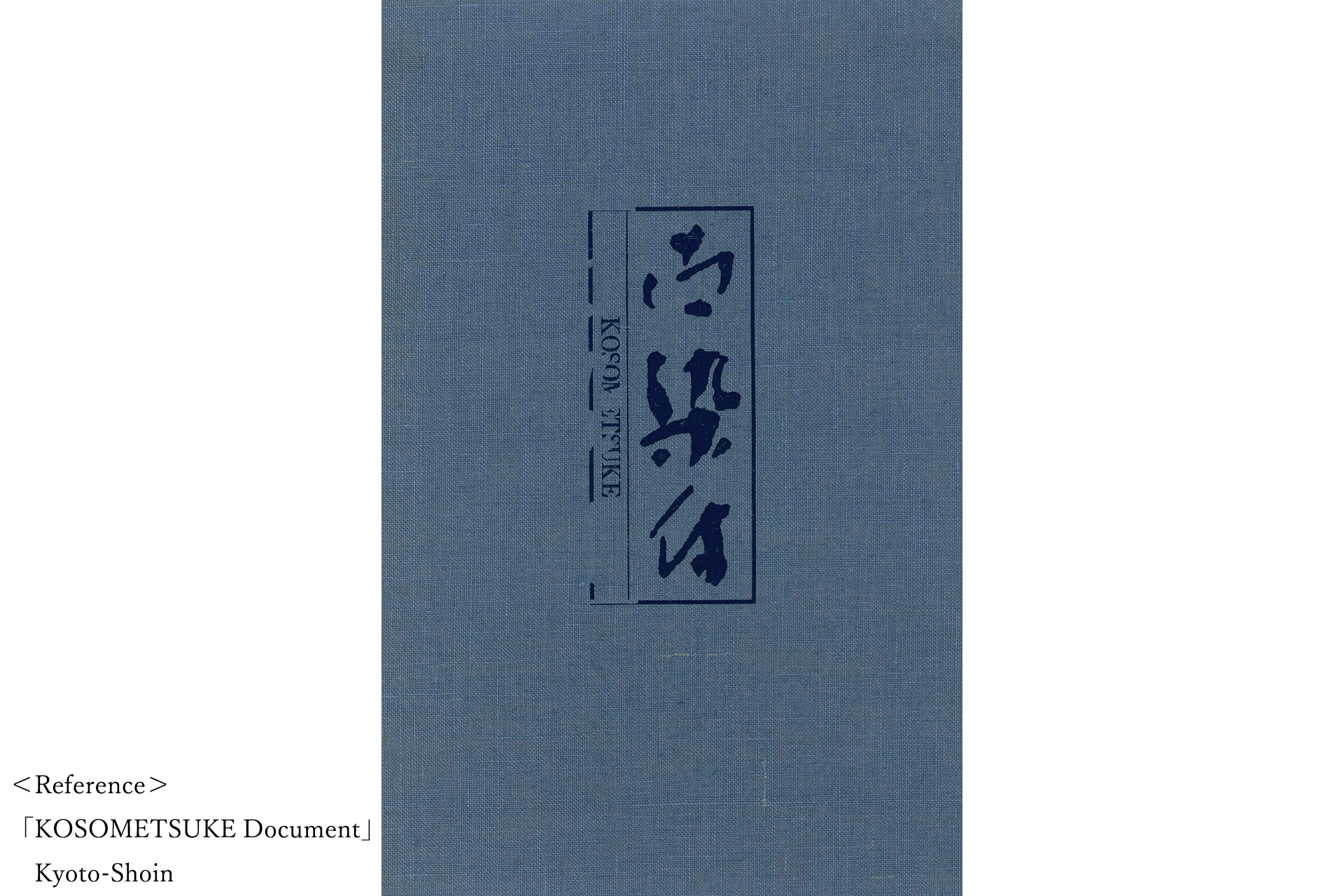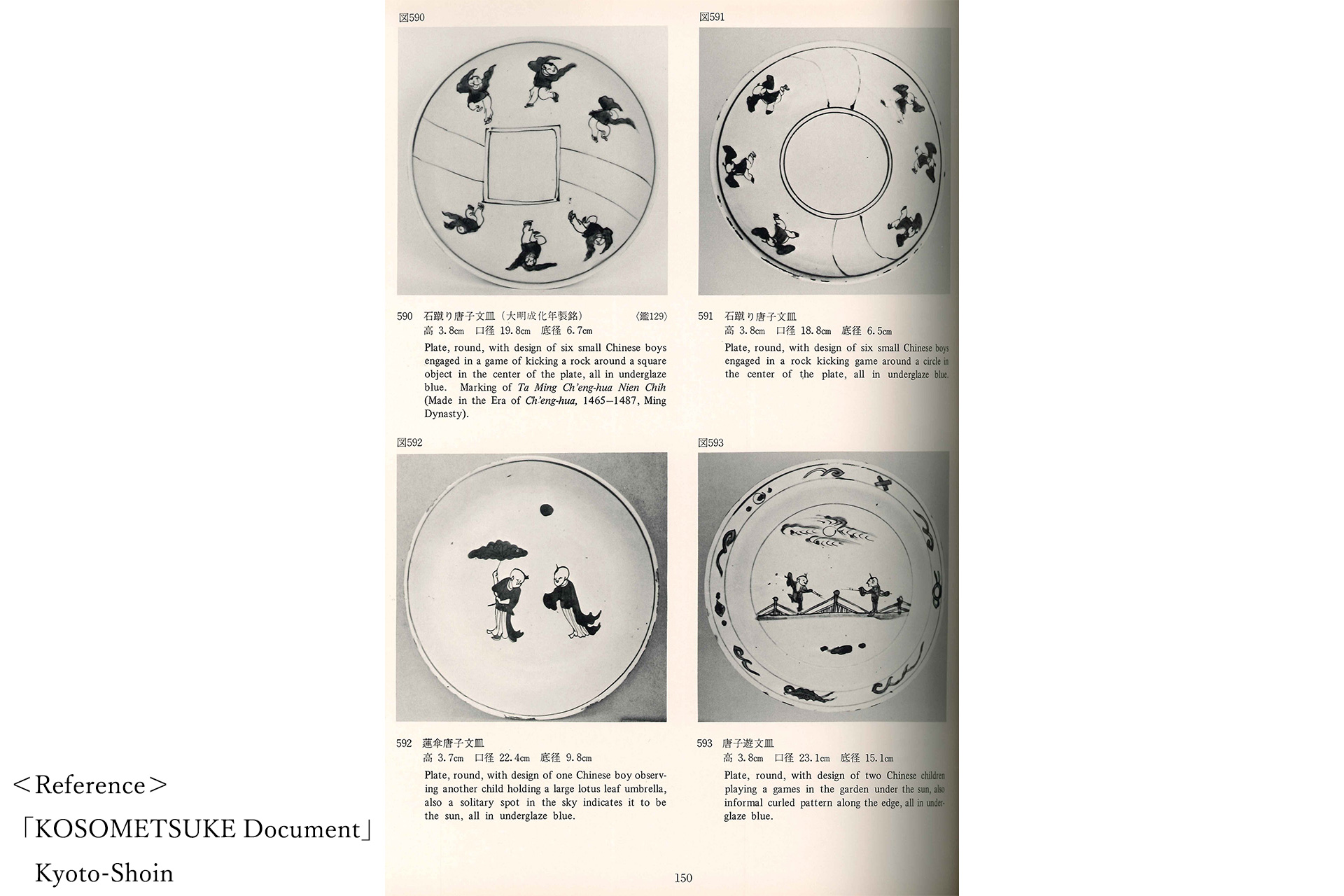Kosometsuke Dish with Design of Chinese Boys(5 Pieces / Ming Dynasty)
1,000,000Yen(Tax Included)
It is the thick kosometsuke that combines two types of design. There is the item written on the box of this kind of work as a "Coin Dish", and the design on old coins has the meaning of amulet in china, and the characters and design written on it represent auspiciousness. The karako(chinese boy)design, which features people playing musical instruments and dancing happily, symbolizes the wish for children to be blessed with many children and for their families and descendants to prosper.
- Period
- Ming Dynasty
Early 17th century
- Weight
- About 361g(1 Piece)
- Diameter
- About 17.7cm
- Height
- About 4.6cm
- Bottom Diameter
- About 7.0cm
- Description
- Paulownia Box(5 Tiered Box)
- Condition
- Excellent Condition(There are mushikui at the edge)
Only 1 piece has a kiln scratch at the bottom
The base , blue and white coloring, and baked are ideal, and they are in excellent condition.

Many kosometsuke still exist in japan, and as imported products, they were a luxury item that was in demand by the powerful and wealthy. There is also a huge difference in quality, and high quality works that are kept in excellent condition have become very popular in recent years.

The karako is a child with chinese style hair and clothing. Karako design was established from the desire to be blessed with children, the safety of the family, and the prosperity of descendants. This design has been strongly inherited in hirado ware.
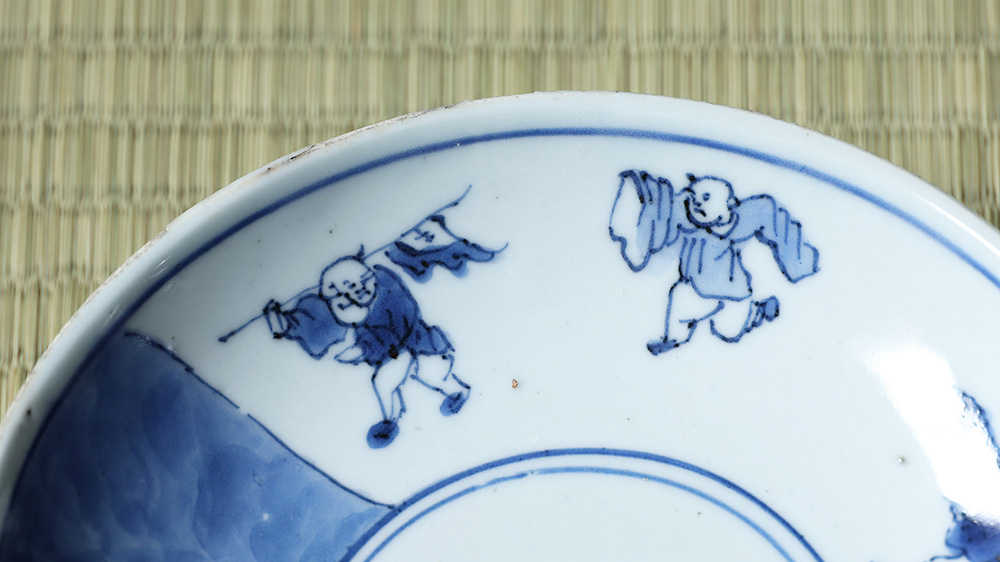
The children are playing musical instruments and dancing happily. This work is perfect for the boy’s festival and peach festival, which wish for the healthy growth of children, or to celebrate your precious child’s special day.
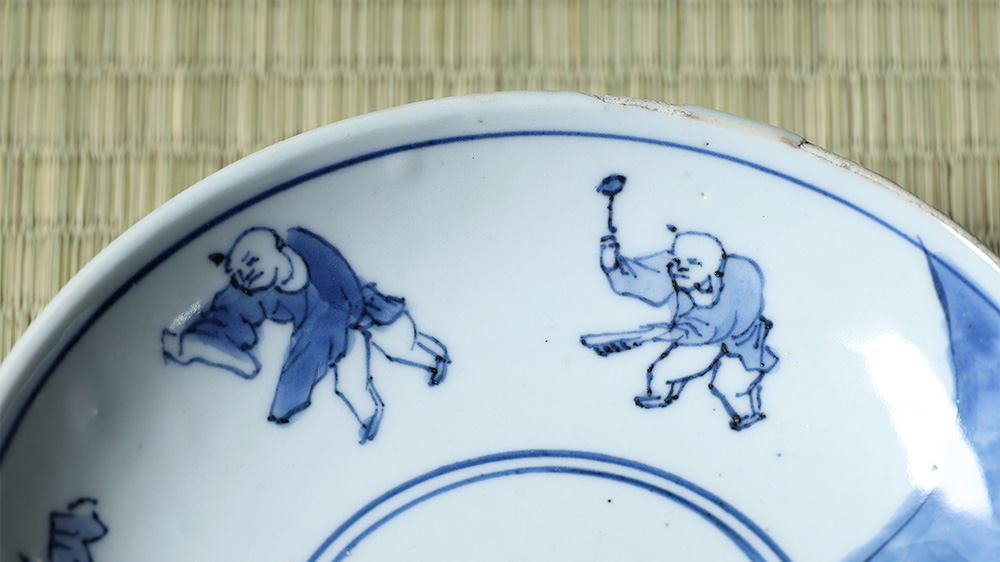
It is very rare that all 5 pieces are perfectly aligned. Rosanjin Kitaoji also liked kosometsuke and wrote, “Good tableware and good furniture make food taste better”.
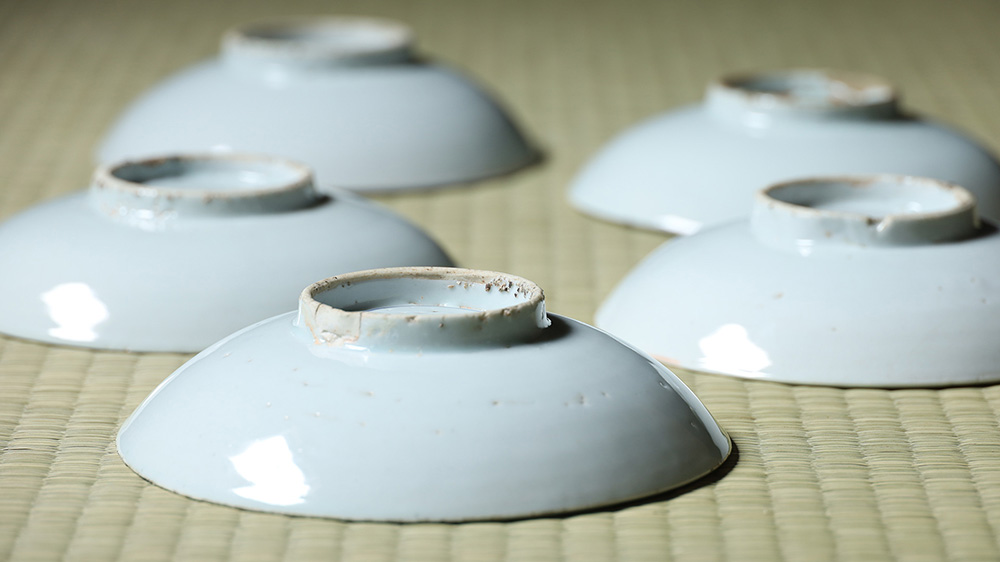
Kosometsuke and japanese cuisine go perfectly together, adding a touch of formality to your table. The size of approximately about 18.0cm also fits well into a tray.
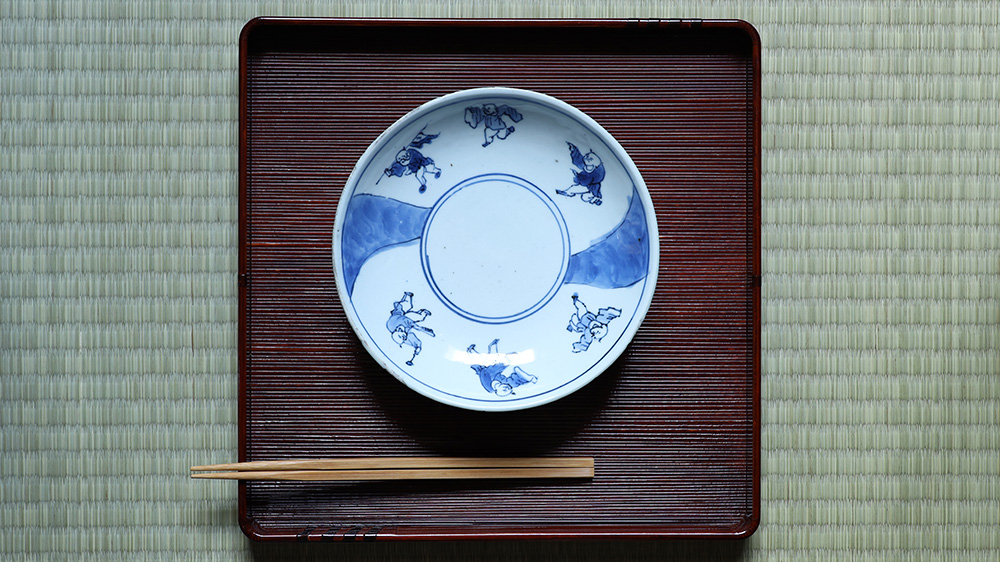
Ko-Sometsuke
Ko-Sometsuke refers to a distinctive group of blue-and-white porcelain fired at the Jingdezhen kilns during the late Ming dynasty, particularly in the Tianqi era (1621–27). A distinct group of blue-and-white porcelains, known as Ko-Sometsuke, is cherished as a category of its own, characterized by unique stylistic features. In contrast to the Qing dynasty Shin-watari (New Imports), these works belong to the older tradition of Ko-watari (Old Imports), and many surviving examples were transmitted to Japan. Following the death of the Wanli Emperor, the Jingdezhen imperial kilns were shut down, and Jingdezhen private kilns assumed control over both production and distribution. Many potters who had once served in the imperial kilns moved to private kilns to sustain their livelihoods, leaving behind works that still reflect the refinement of official ware. A significant portion of these works are classified as Ko-Sometsuke and Shonzui. Ko-Sometsuke is broadly divided into two categories: tea pottery commissioned by Japanese tea masters, and everyday utensils for general use. As tea pottery, Ko-Sometsuke works were crafted in imitation of the thick-bodied forms favored by Japanese tastes, characterized by substantial walls and a bold, vigorous presence. In the late Ming dynasty, Japanese tea masters actively commissioned the production of novel tea utensils, seeking works that reflected their individual aesthetic sensibilities. Many Ko-Sometsuke works exhibit a phenomenon in which the glaze flakes away due to differences in shrinkage between the base and the glaze, exposing the underlying base. This effect, resembling insect bites, is poetically referred to as “Mushikui”. This phenomenon is most commonly observed along the rim and at the corner, where the glaze tends to be applied more thinly. Though typically regarded as a flaw in conventional ceramics, tea masters discerned in it a natural elegance, appreciating its rustic simplicity as a form of aesthetic expression.
